
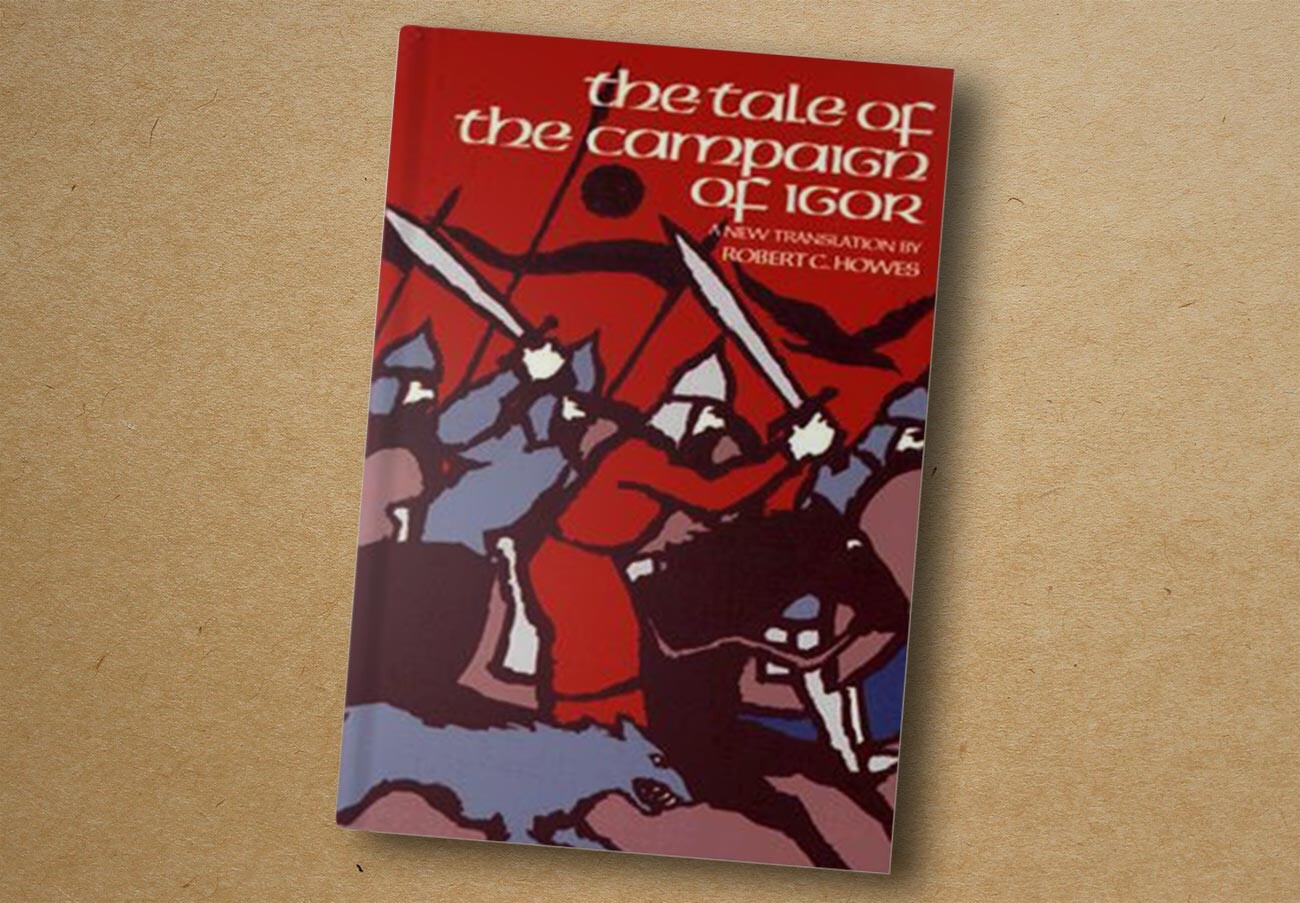
This "tale of woe" about Prince Igor's unsuccessful campaign against the Polovtsians, a Turkic nomadic people, is one of the oldest surviving works of Russian literature, believed to have been written around 1185. The work, which is very complex in structure, encompasses several genres: heroic tale, song and epic. According to Dmitry Likhachev, an eminent 20th-century Russian medievalist and linguist, the purpose of the Tale was not to show in detail the prince’s campaign itself, but to expose the shortcomings of feudal fragmentation in Russia. The work influenced many writers, and since the 19th century Russian poets have created ever more modern “translations.”
It is with the genre of hagiography that all ancient Russian literature essentially begins. The chronicler monks canonically described the righteous lives of saints and the miracles they performed. "The Life of Avvakum" differs in that it was compiled during his lifetime, and by himself. The text is replete with references to specific people, names of places and details of his life. Avvakum also mentions miracles, listing cases when he healed people or saved them from demons. That said, the main theme is the church reforms of Patriarch Nikon (whom he labelled an apostate) and the birth of the Russian Old Believers, which, as the leader of the schism, ultimately led to Avvakum’s execution. His biography was banned for almost 200 years, and when it was finally published, in 1861, it caused a sensation. It influenced Tolstoy, Dostoevsky and many other writers. Read more here.
Folktales were passed down orally from generation to generation; even adults listened to them in the evening while weaving or sewing or doing other work. They were everyday moralistic stories, fables about animals and fantastic creatures, fairy tales about princesses and princes. They essentially shaped the national character and cultural code.
READ MORE: 10 main Russian fairy tales
All Russian writers and poets were brought up on Russian folktales; many repurposed or adapted them for use in the own works. Some of their creations have become so entrenched in the people’s psyche that not everyone remembers which are genuine folk stories and which are the product of a single author’s imagination. A great contribution to the preservation of Russia’s folklore heritage was made by Alexander Afanasiev, who wrote down the main tales and published the most comprehensive collection, entitled "Russian Folk Tales" (1855-63).
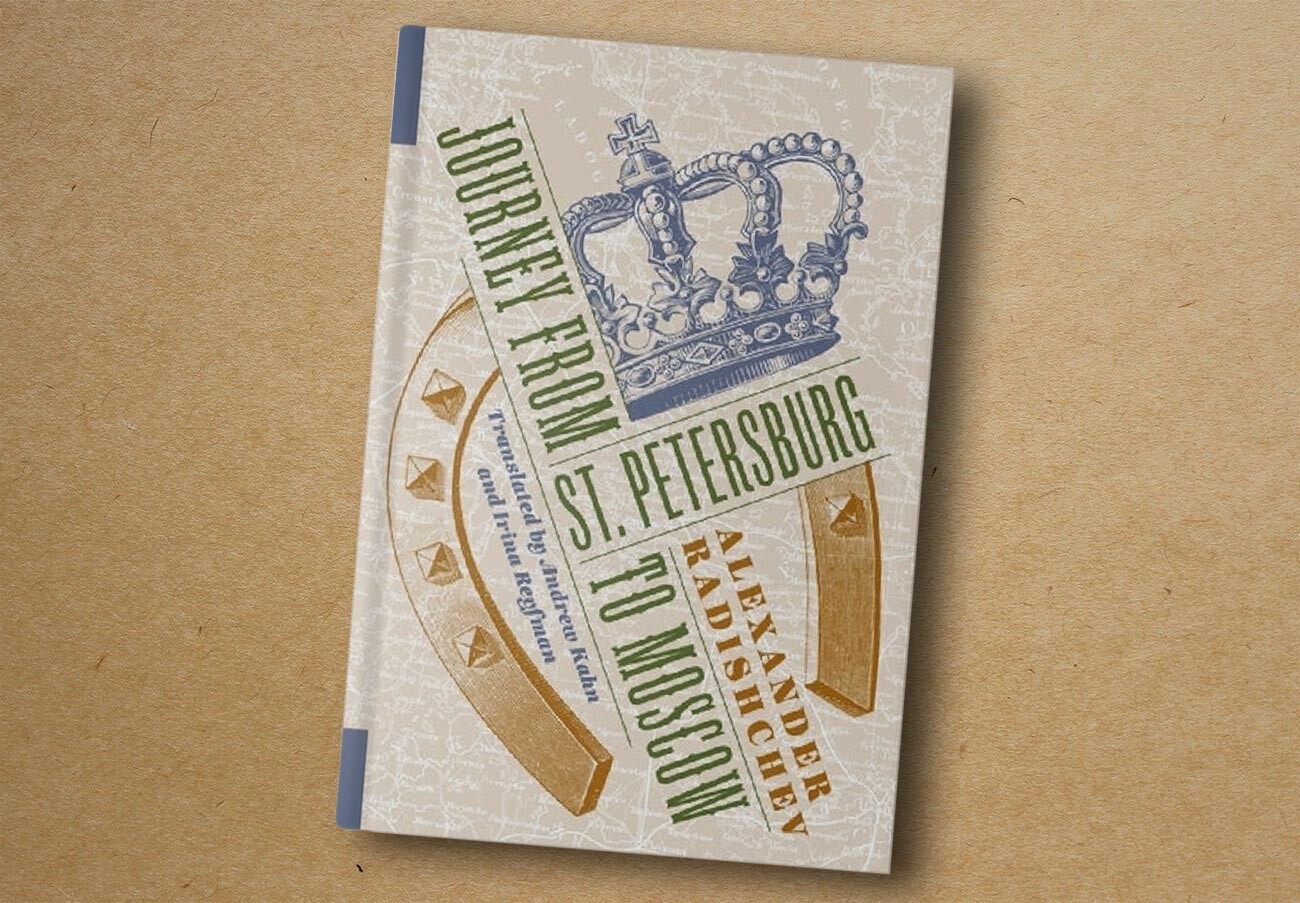
As a civil servant, Radishchev traveled many times between Russia’s two capitals and observed the lives of the peasants along the way. He wrote a grim and truthful report on life in the Russian countryside, and expressed very bold views about serfdom and the shortcomings of the social order. Having read the work, Catherine the Great was furious, ordered it to be banned (it was published only in 1905), and branded the author “a rebel worse than Pugachev.” Radishchev was imprisoned and sentenced to death, but this was commuted to exile in Siberia. He was one of the first Russian authors to suffer for telling the truth.
A tear-jerking story of how a nobleman seduces a peasant girl and abandons her after a night of love. The work is considered a model of the Russian sentimental tale. "Poor Liza" captivated readers with its unusual plot and tragic denouement. Moreover, Karamzin eschewed highfalutin language, becoming one of the first writers to use a simple style.
This comedy in verse marked a real revolution in Russian drama: written in simple language, it destroyed all the canons of 18th-century classicism and became the first realist play. "Woe from Wit" is still a regular at theaters across Russia, and the names of the characters have become bywords. The action takes place in Moscow, ten years after the Patriotic War of 1812 against Napoleon.
READ MORE: 3 reasons to read 'Woe from Wit'
A young man of progressive views, Alexander Chatsky, arrives home from abroad. He goes to visit his young sweetheart Sofia, with the intention of asking her father for her hand. However, it turns out that Sofia has fallen in love with another, not entirely pleasant, man, who is trying to ingratiate himself with everyone. The “reborn” Chatsky feels like a stranger in his own land and quarrels with everyone… Read more about the play here.
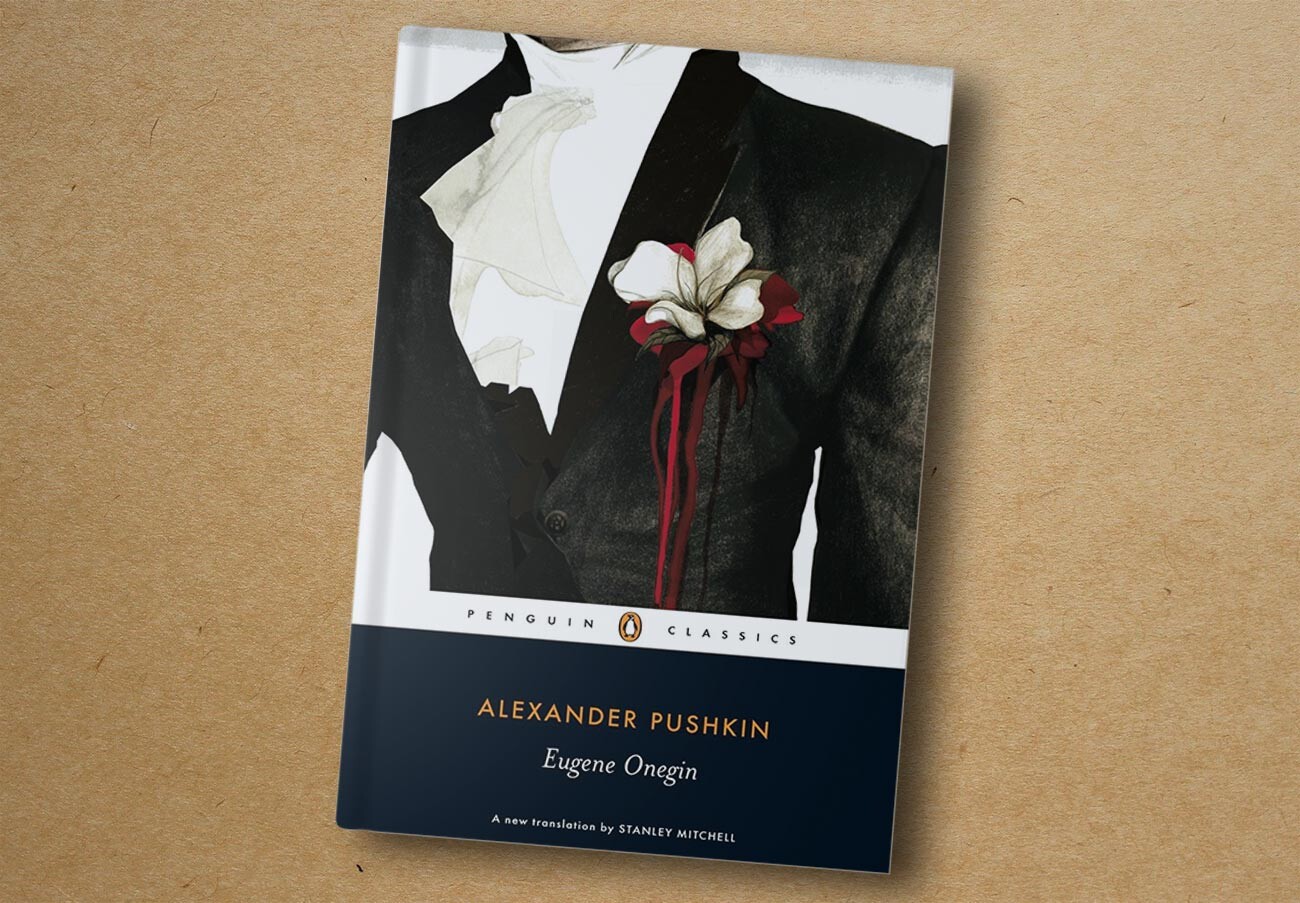
This novel in verse is considered not only the pinnacle of Pushkin's oeuvre, but an entire "encyclopedia of Russian life." The author paints a picture of a provincial estate and country living, with depictions of secular Petersburg and old Moscow.
Onegin, a young aristocrat from the capital, arrives in the village. He quickly becomes bored and seeks entertainment, but finds himself engulfed in a real drama: a neighbor's daughter, Tatyana, confesses her love for him, and another neighbor, Lensky, who happens to be his best friend, challenges Onegin to a duel over Tatyana’s flirtatious sister…
The work is almost impossible to translate due to Pushkin’s poetic wizardry and invention of the “Onegin stanza” with its precise structure and rhyme. Outside Russia, it is appreciated more as an opera, namely Pyotr Tchaikovsky’s in 1877-78.
Another of Pushkin’s works to be “opera-ized” – this time by Modest Musorgsky. As a play, it has been staged countless times and adapted for screen. In the drama, inspired by Shakespeare’s histories, Pushkin recounts one of the most mysterious episodes in Russian history: the murder of Tsarevich Dmitry, the second son of Ivan the Terrible, the Time of Troubles and the appearance of the impostor False Dmitry. Thanks to Pushkin, Boris Godunov is remembered in the public consciousness as the instigator of the murder of Tsarevich Dmitry, for which he was punished by fate.
Pushkin is valued in Russian literature primarily as a poet, but he also excelled as a dramatist and prose writer, as shown in this gripping cycle of five stories. There’s a sentimental tale about a noblewoman who dresses up as a peasant girl to make the acquaintance of a handsome neighbor, while their fathers are feuding. And a romantic story about a duel in which one of the participants postpones his shot and invites his opponent to settle the matter several years later. And the incredible story of an officer who accidentally gets married…
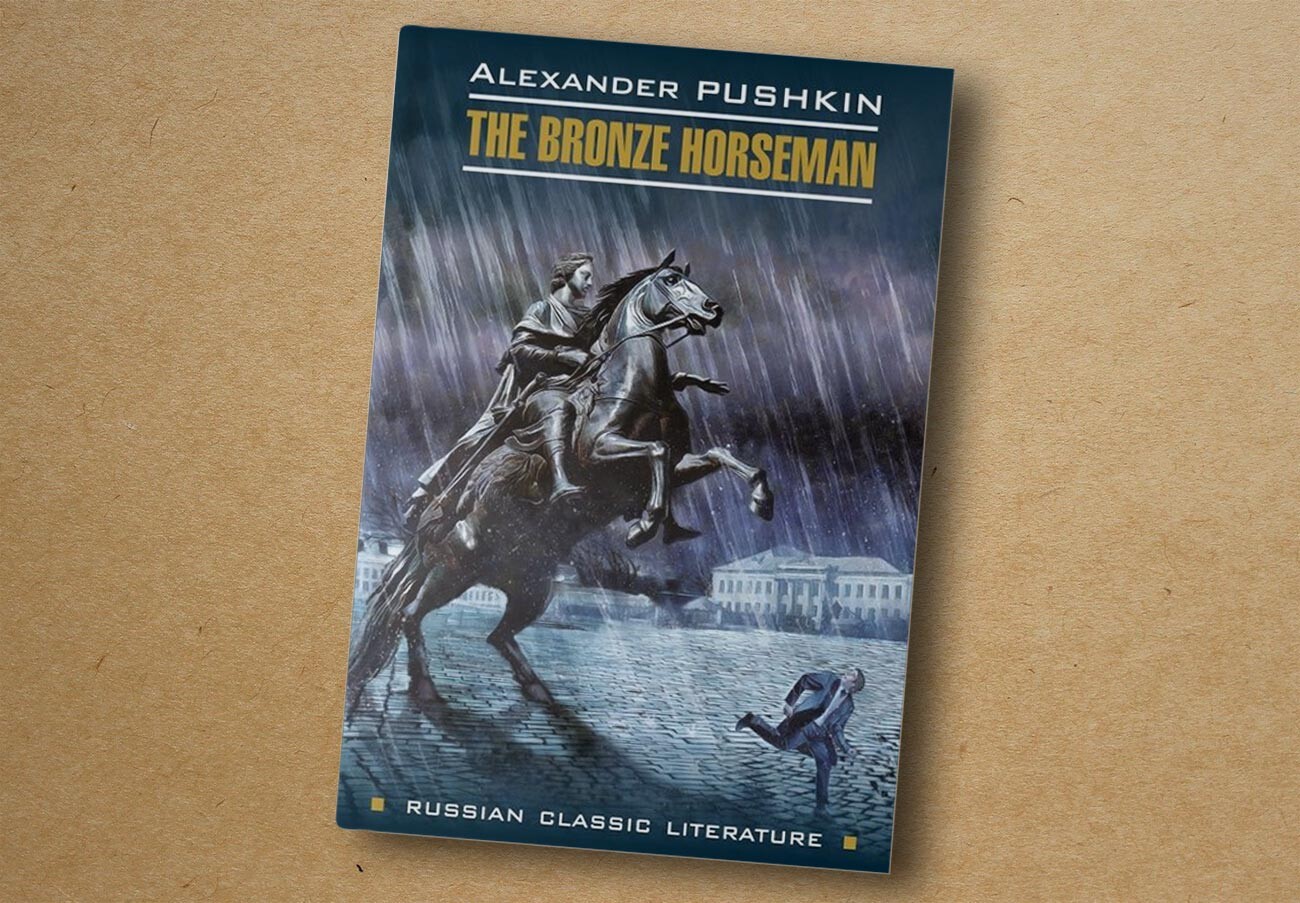
This story in verse is a paean to St Petersburg. “I love you, Peter’s creation” is one of the most famous quotes from the work. The title of the story comes from the nickname of the famous equestrian monument to Peter the Great, which has become a symbol of the city. Although the work eulogizes the city’s architectural elegance, the main plot revolves around a tragic real-life event: the great flood of 1824, which decimated the city. The protagonist, again called Eugene, discovers that the house of his bride has been swept away and she has perished. He goes crazy and wanders around the city, observing the devastation and cursing the city’s founder, who doesn’t take kindly to criticism…
Another tale of madness, this time as a result of gambling. To learn the old countess’s secret of success in cards, the young Hermann enters her bedroom and threatens her, whereupon she dies of fright. Later he encounters her ghost, who names the winning sequence of cards that he must play: “Three, seven, ace...” The three and the seven are winners, but the ace magically morphs into the queen of spades bearing the face of the old countess, who seems to wink at him mockingly. The work was a smash hit in Europe, and again inspired Tchaikovsky to write an opera of the same name.
"The Captain's Daughter" is an historical novel about the peasant uprising led by Yemelyan Pugachev that swept across Russia in the 18th century. But more than that, it is a tale of honor, duty and love.
READ MORE: 5 questions about Pugachev’s Rebellion
The young Petya Grinev goes to serve at a remote border fortress. On the way, a stranger helps him find his way in a heavy snowstorm. In gratitude, Grinev gives him his sheepskin coat, an act that later saves his life, for the stranger turns out to be none other than Pugachev himself. The novel is worth reading if only for the prophetic phrase: “God save us from seeing a Russian revolt, so senseless and merciless.”
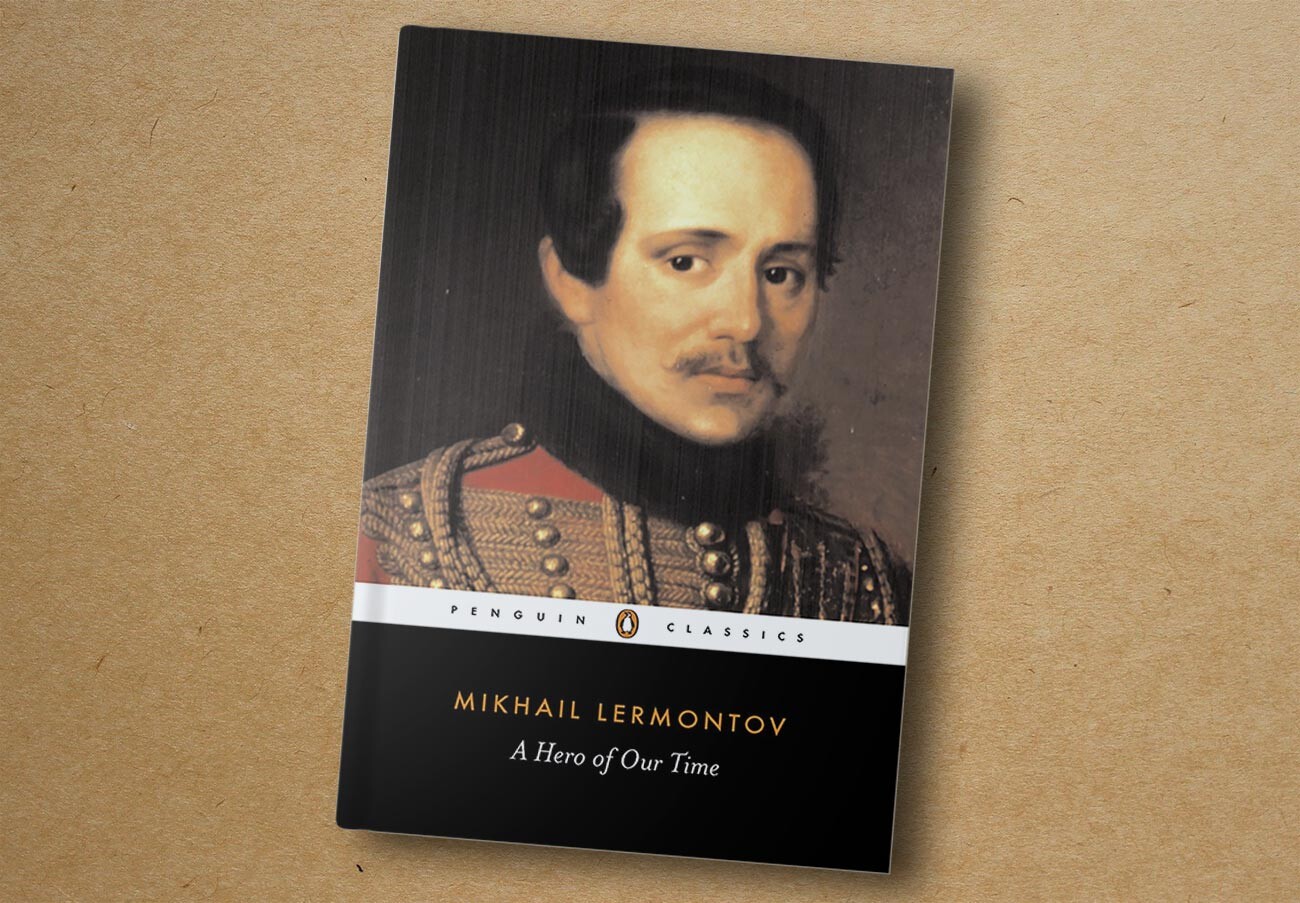
Lermontov is considered Russia’s second poet (after Pushkin), valued for his abundant and beautiful romanticist poems and verse, which contrast good and evil, the sublime and the sordid, freedom and captivity.
"A Hero of Our Time" is Lermontov's only prose novel. The protagonist Pechorin is somewhat reminiscent of Pushkin's Onegin: cold, unable to love, risks his life for the sake of amusement. The novel consists of several chapters, each describing individual episodes in Pechorin's life. To begin with, we read about the hero in the third person, but, as the novel progresses, the optics narrow in, culminating in a first-person confession.
These stories are set in a small village in modern-day Ukraine, then on the edge of the Russian Empire. Gogol makes extensive use of Ukrainian words, even providing his own glossary, as well as images of local lore. In the stories, he describes “Little Russian” (Ukrainian) customs and folk way of life. The stories are extremely diverse, ranging from the merry “The Night Before Christmas” to the blood-curdling “A Terrible Revenge.” At the same time, evil spirits, devils and witches are all properly formed characters each with their own personality. The collection was warmly received by contemporaries: Pushkin, for example, extolled Gogol’s lively language and vivid imagery.
This collection is considered a kind of sequel to Evenings on a Farm. Plot-wise they are unconnected, but are similarly based on Ukrainian folklore. Of the four stories, two are famous and have been made into films: “Taras Bulba” tells of a Zaporozhian Cossack and his two sons, while “Viy” is perhaps the most terrifying work in Russian literature.
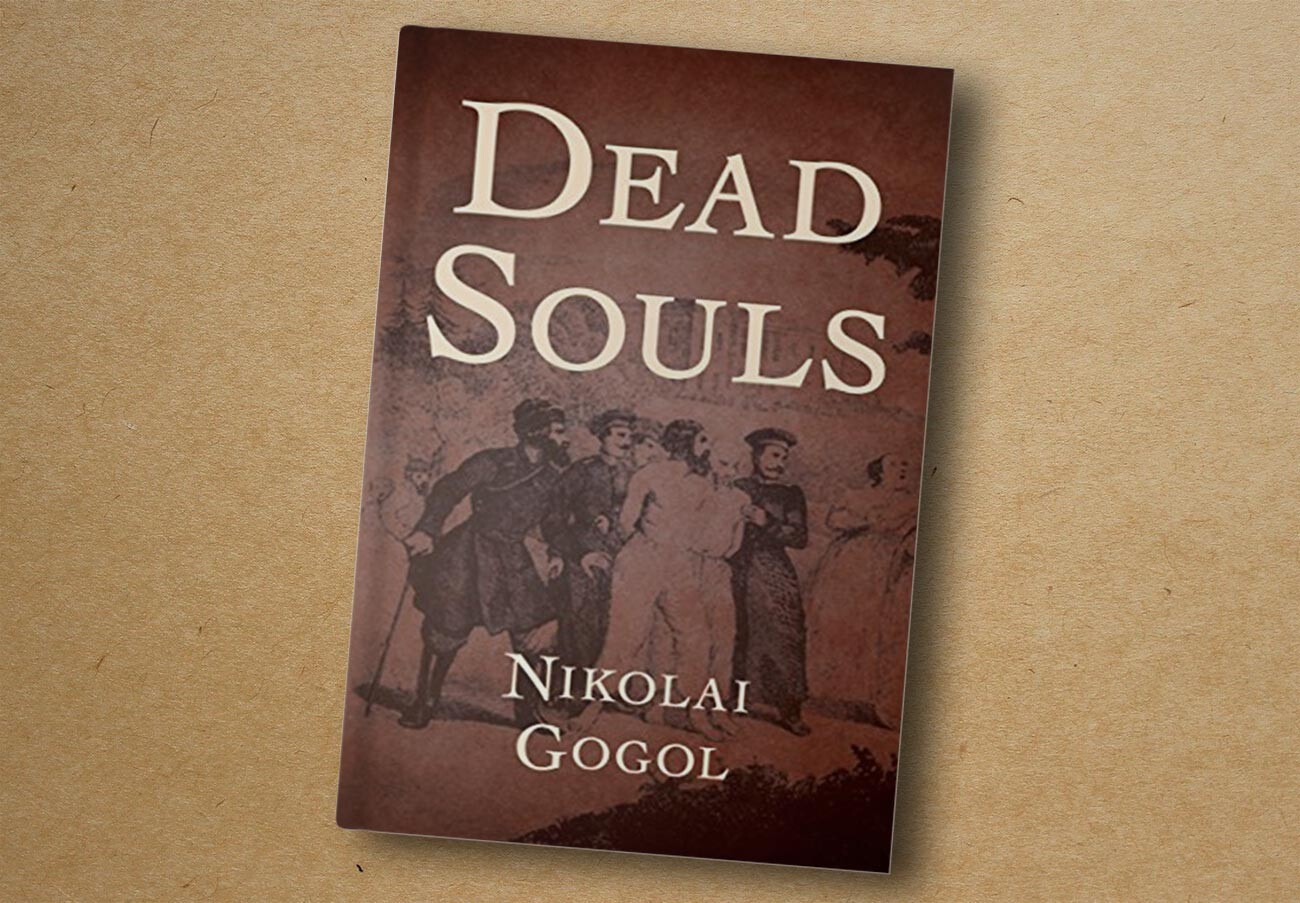
Although it was written in prose, Gogol himself described this work as a poem – in the antique sense of a Dantesque journey through the “circles of hell”, with lengthy lyrical digressions about Russia and her long-suffering people. The work is considered the pinnacle of Gogol's artistry and one of the keys to understanding the Russian soul.
The plot revolves around the petty nobleman Pavel Chichikov, who, arriving in a provincial town, pretends to be a wealthy landowner to gain prestige. The only snag is that he doesn’t own a single “soul”, i.e. serf. So he resorts to chicanery, aided by Russian bureaucracy itself, which at that time made it possible to buy up “dead souls” from local landowners – deceased peasants still recorded as alive on the state register (population censuses in those days were rare and rough at best). The landowners, each more comically grotesque than the previous, react differently to Chichikov’s proposal…
One of the most celebrated Russian comedies about corruption, sycophancy and officialdom’s attitude to ordinary people. This play is still regularly staged in theaters across Russia and the world. In the story, a small provincial town is expecting an incognito visit from a government inspector from St. Petersburg. However, a minor official who happens to be in the town is wrongly identified as the important guest. He decides to exploit the lickspittle mayor and his subordinates by accepting bribes and even the mayor's daughter in marriage…
The title of the novel is a perennial question for Russia. Written by publicist and revolutionary Herzen, the work is considered one of the first examples of Russian realism. The author explores the influence of education on the formation of a person's character and personality. Who is to blame for the fact that people are unhappy? In addition, Herzen sharply contrasts thinking, educated folk with those who lead an idle lifestyle. At the same time, it is a novel about love and the importance of mutual understanding.

This novel about peculiarly Russian laziness introduced the concept of “Oblomovshchina” into colloquial Russian speech. Goncharov’s anti-hero, Ilya Oblomov, does nothing except loaf around. He is a landed nobleman, which means he has no need to work… His childhood friend and polar opposite, the enterprising Andrey Stolz, does everything for him. The only moment in life when Oblomov briefly emerges from his slumber is when he falls in love. But can such a man really commit to marriage? Interestingly, the author remains impartial, siding with neither the indolent Oblomov, nor the rationalist Stolz. Read more about “Russian laziness” here.
These stories by Turgenev were based on real episodes that occurred on the family estate. The writer introduces a panoply of characters and personalities from the Russian countryside with their everyday travails. The stories were first published sequentially in the literary magazine Sovremennik, then issued as a separate book. The work was considered groundbreaking in its day: Turgenev was the first to take such a broad look at the Russian people.
This short story is one of the saddest in all of Russian literature, which is saying something. And the main characters – the peasant Gerasim and his dog Mumu – are household names. Without unnecessary spoilers, it is a story about how tyrant landowners in Tsarist Russia abused their serfs and treated them like dirt…

Turgenev raises issues of the nobility, the confrontation between Russia and the West, and the question of moral principles.
Disappointed with life in Europe, Lavretsky returns to his estate in Russia to “plow the land,” where he soon falls in love with the neighbor's daughter Liza. Their love is mutual, and, having learned about the death of his wife, who remained in Europe, he proposes to her. However, it suddenly transpires that the wife is still alive. Heartbroken, Liza goes to live in a convent…
The novel shaped the image of the so-called “Turgenev girl” – an incredibly strong-willed young woman, raised in a “nest of gentlefolk”; the title has become proverbial.
The young Arkady Kirsanov comes home to his father's estate accompanied by his friend Yevgeny Bazarov, a nihilist student. Bazarov is studying to be a doctor and intends to help peasantry. He rejects all authority and argues with his landowner father and Arkady's aristocratic uncle, who both hold liberal views. But not even a nihilist is immune to love…
Russian writers had previously touched on the topic of generational conflict (the aforementioned Griboyedov in "Woe from Wit"), but it was Turgenev's novel that really fueled the topic. He also mocked the overly refined gentry, introducing a new progressive hero, and noted that real life lies in toil, not in idleness.
One of the first deeply psychological works of Russian literature. Tolstoy skilfully conveys events and feelings as seen through the eyes of a child. The first part of an autobiographical trilogy, it is the author’s attempt to examine himself and the nature of a multitude of feelings. Tolstoy puts resentment, shame, embarrassment and excitement – feelings that every child experiences – under the microscope. The hero of the story is little Nikolay, who has to leave his beloved mother and go to Moscow with his father. Later she dies, whereupon his happy childhood ends.
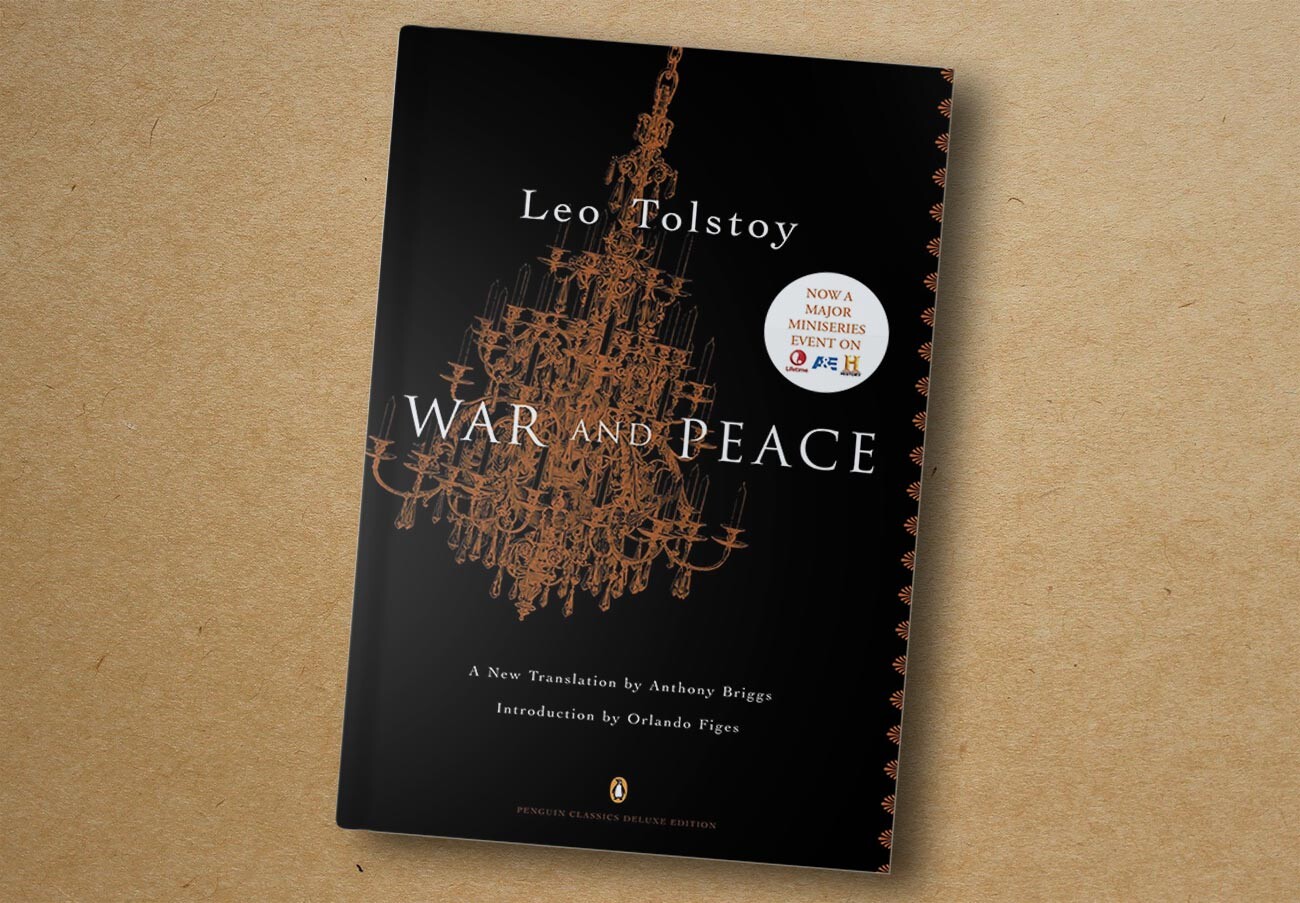
Tolstoy’s opus magnum, a four-volume epic novel known and loved the world over. It tells the story of several Russian families against a backdrop of crucial historical events, most notably Imperial Russia’s war with Napoleonic France. The narrative encompasses love and betrayal, war and hard-won peace, both political and emotional. Tolstoy speaks on behalf of a cast of hundreds of characters (including Napoleon himself), each with their own unique voice, full of depth and color. For those as daunted by the novel as the French by the Russian winter, we recommend the Oscar-winning Soviet film adaptation directed by the late, great Sergey Bondarchuk.
Another majestic novel by Tolstoy. But unlike in “War and Peace”, the author’s focus here is not on epoch-defining historical events, but on the nature of happiness and unhappiness in family life. This theme was very close to the writer’s own heart. What’s more, Tolstoy himself “stars” in the novel: in the person of Konstantin Levin (Lev is Russian for Leo), who, like Tolstoy, withdraws from high society in favor of plowing the fields with his peasants.
Tolstoy's last novel, which he considered his best work. It is the story of the redemption of a once promiscuous officer, who seduces the innocent ward of his aunt and then abandons her, pregnant, assuming he can just pay her off. For him, it is a trifle, but the girl’s life is shattered. Years later they meet again in court: he as a bored juror, she as the defendant. Upon hearing her harrowing story, the officer experiences an inner awakening. He follows her to the penal colony to atone for his sin… The novel reflects Tolstoy's own spiritual struggles and is considered the pinnacle of his reflections on the meaning of life and the nature of goodness. Read more about Tolstoy's books here.

One of the most popular plays in Russia, the action takes place in a fictional provincial town, home to the Kabanovs, a strongly patriarchal merchant family. The young daughter-in-law, Katerina, suffers from her mother-in-law's cruelty and her husband's indifference. She remembers the loving atmosphere in her family before marriage. Katerina falls in love with another man and meets him in secret, but, unable to bear the deceit, confesses to her husband in the presence of her mother-in-law. For Katerina, there is only one way out of her predicament…
A contemporary critic described the heroine as "a ray of light in a kingdom of darkness" – she saw further than the ossified society around her, daring to live as her heart, not circumstances, dictated.
Another play by Ostrovsky dealing with an acute social issue: marriage of convenience. The beautiful Larisa is very popular with men, but the girl, who lives with her widowed mother, has no dowry to speak of. In search of a suitable match, the mother receives all kinds of male guests in the house, and Larisa decides to marry the first one who approaches her to get away from it all… For Larisa still loves the wealthy shipowner Paratov, and he, unable to resist, spends the night with her, but announces the next morning that he already has another, rich bride. To save Larisa's honor, the suitors invited by her mother flip a coin – the winner will get to take her away from the city.
The play was coolly received by critics, who called it just another work about “a stupid girl who gets seduced.” However, it had a major impact on Russian drama for the strong female lead, who is not afraid to go against society, and the depiction of a society of men who have forgotten the meaning of honor and dignity. The play was staged in Moscow and St. Petersburg with great success, and was later turned into the film "A Cruel Romance", starring Eldar Ryazanov.
Chernyshevsky wrote this work in a prison cell, where he had been incarcerated for spreading revolutionary sentiment. "What Is to Be Done?" sent shockwaves through society (it inspired Vladimir Lenin so much that he lifted the title for a political pamphlet of his own). Under the outer shell of a novel, written partly in response to Turgenev’s "Fathers and Sons", Chernyshevsky lays out his profound thoughts about the new economic and social phenomena, about feminism and nihilism. And clearly hints at the inevitability of revolution in Russia. Instead of Turgenev’s nihilist Bazarov, however, Chernyshevsky peppers his work with “new people” harboring radical views on how to serve society.
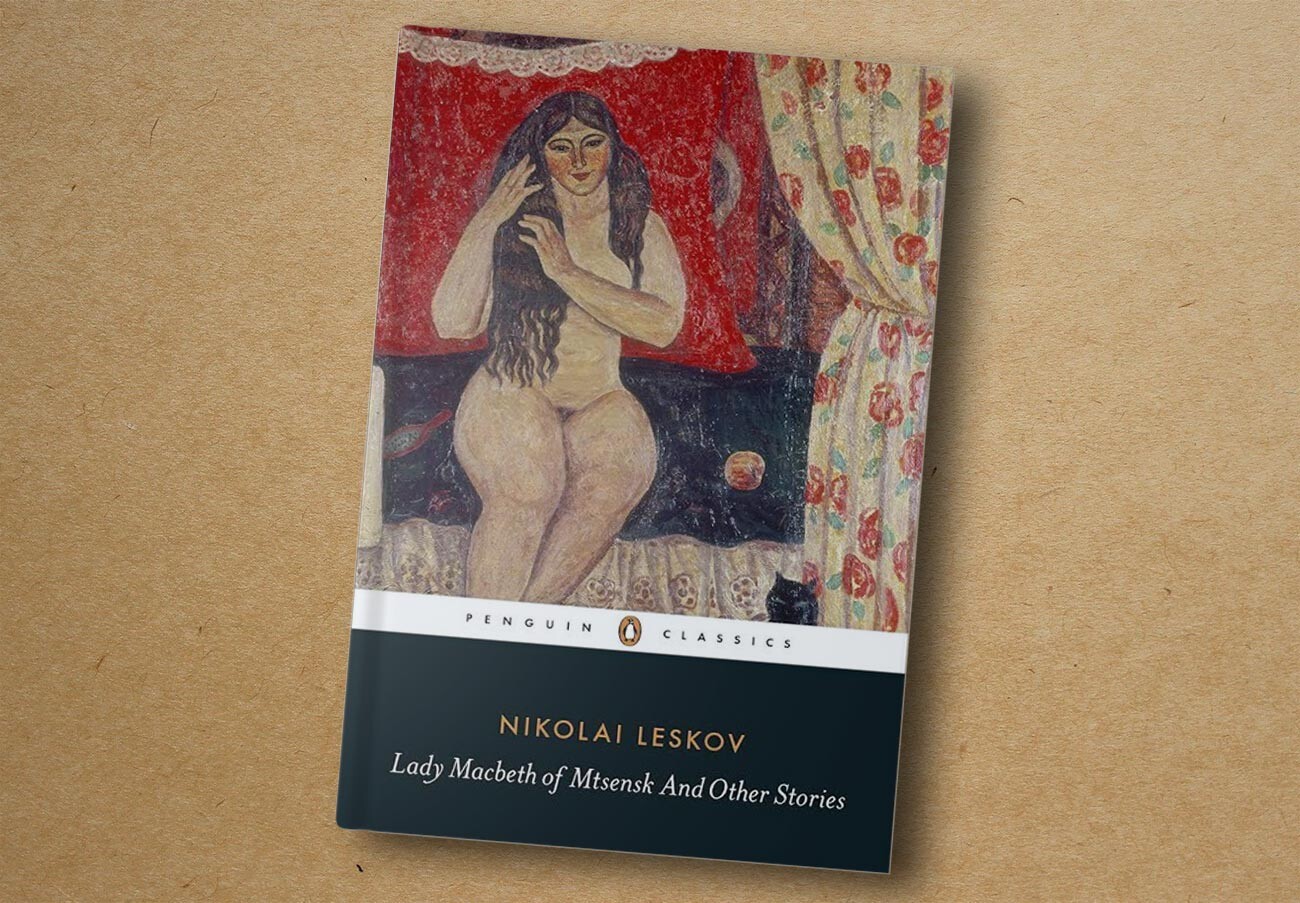
Leskov is not well known outside Russia, and yet in the West this work, based on Shakespeare's murderous heroine, has been made into a film. It is the story of the young merchant’s wife Katerina Izmailova, who lives in the Mtsensk district of the Oryol region. Her husband is constantly away on business, and she finds herself alone and bored in the enormous house. Katerina duly falls in love with the handsome estate manager Sergey, and they have a stormy love affair, which the father-in-law accidentally discovers… To save her beloved, Katerina decides on murder, and not just one.
Contemporary critics were in raptures over Leskov’s portrayal of the “darkness” of merchant life, tied up in money and passion, and how he bundled it into a tragedy of Shakespearean proportions.
The Russian tsar pays a visit to England, where he is shown a miracle of engineering: a life-size (i.e. very small) mechanical flea. Back in Russia, engineers are tasked with inventing something even better to amaze the English. At an arms factory in Tula, a “cross-eyed left-hander” achieves the incredible: he puts a miniature horseshoe on the flea. “Lefty” is rewarded for his work, whereupon he embarks on a drinking bout that leads to his death. In Leskov's time, drunkenness was a national scourge, and this sorry tale sheds light on the "Russian" character.
The impoverished student Rodion Raskolnikov, barely able to make ends meet, is forced to borrow money from an elderly pawnbroker. Tired of his beggarly existence, he poses himself a philosophical question: am I a trembling creature or have I the right…? To prove to himself that he is master of his own destiny, he resolves to commit a crime, and not just any: to murder the old pawnbroker.
Dostoevsky ponders the nature of violence and the circumstances that can force a person to take extreme measures: murder or prostitution, as the protagonist’s beloved Sonya Marmeladova has to do. The novel is also a profound statement on the search for the meaning of life.
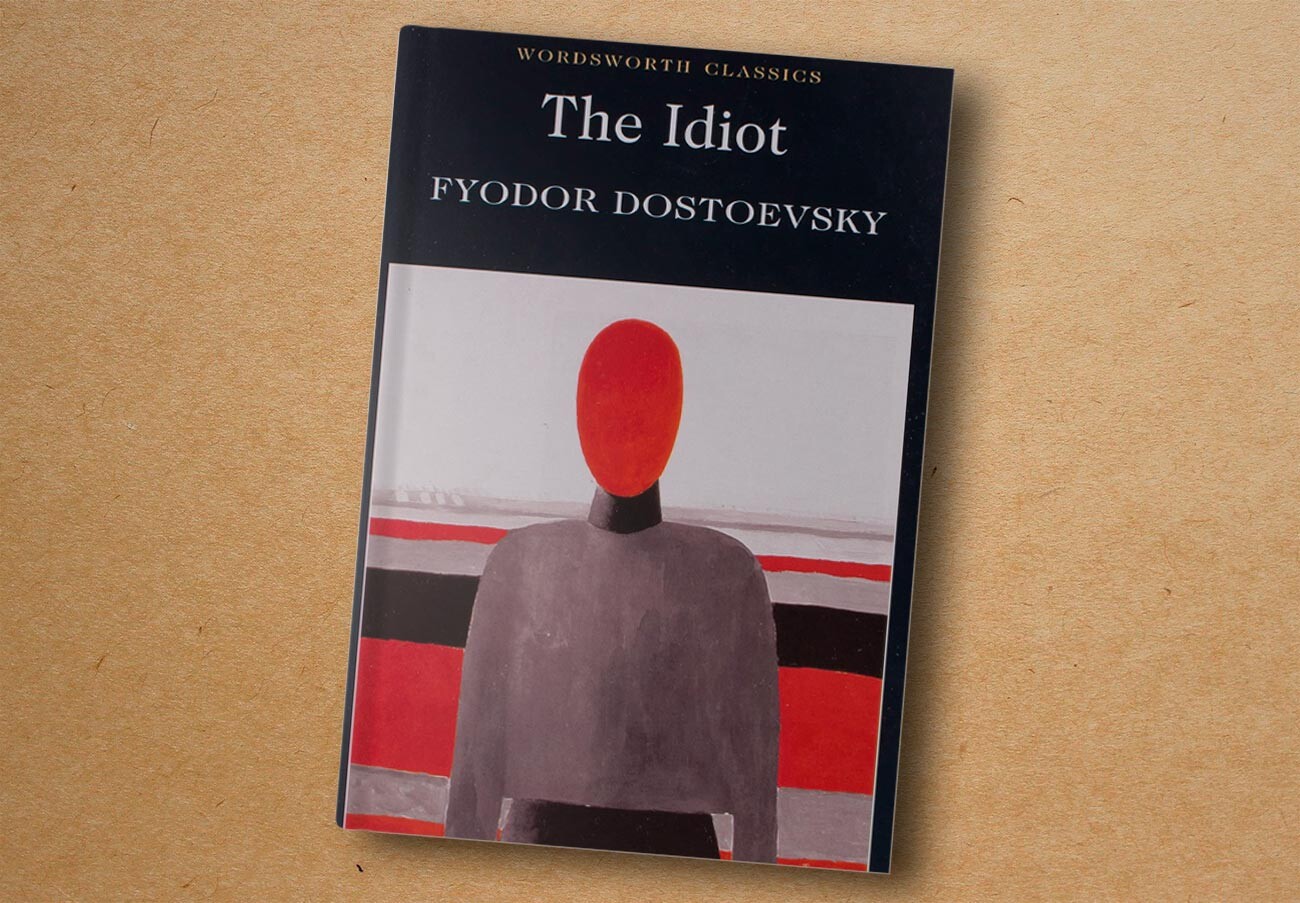
Dostoevsky is known for probing the evil that lurks inside the human soul, but in this novel he depicts not just a positive character, but an almost ideal person, with Christ-like characteristics. Prince Myshkin – naive, trusting, unaffected – finds himself at the center of a whirlpool of passions, but rises above the crowd of liars and drunkards all around. Even in Nastasya Filippovna, regarded by society as a “fallen” woman, the hero sees only beauty and goodness, becoming imbued with tremendous affection for her.
After the Byronic, demonic Stavrogin returns home to Russia from abroad, the provincial town where the action takes place is beset by murder, arson and intrigue… "Demons" is Dostoevsky’s most political novel and expresses his feelings (that is, contempt) for the new radical mood in Russia. It was a volatile time, with terrorist groups popping up everywhere and revolutionary ideas penetrating the fabric of society. The avowedly Slavophile Dostoevsky was greatly disturbed by the trend, which he blamed on Westernizers and nihilists. In light of the October Revolution of 1917, some see the novel as prophetic.
Dostoevsky’s last and arguably greatest novel, and the quintessence of his deep reflections on faith, morality, duty and love. This monumental work is part theological reflection, part detective story: the plot revolves around the murder of the dissolute Fyodor Karamazov by one of his sons. The themes of money and a father-son love rivalry that pre-empted Freud are interwoven into the narrative. The finale features a dramatic court scene, where the witness testimony keeps the reader in suspense till the very end.
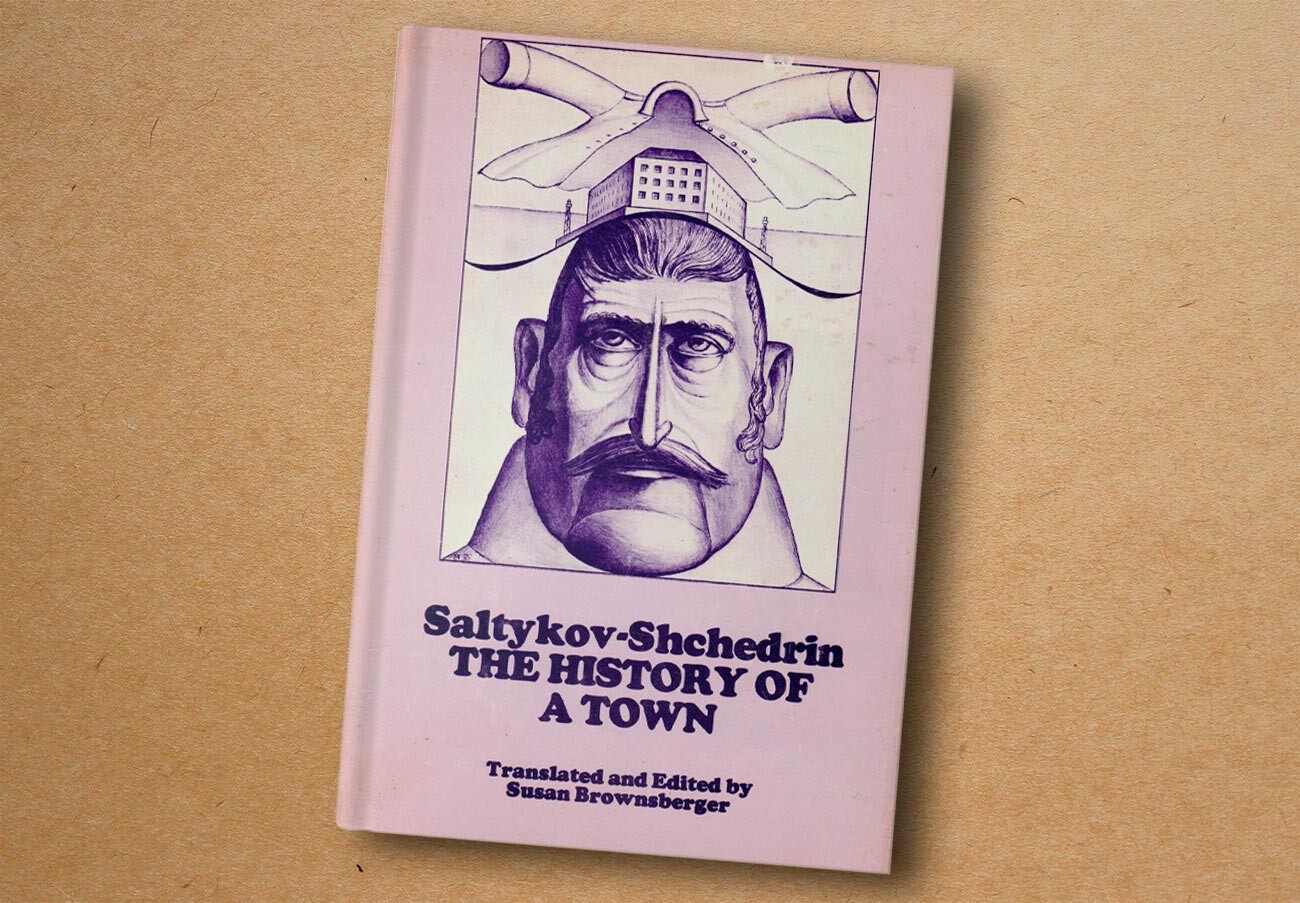
Saltykov-Shchedrin is one of Russian literature’s greatest satirists, often compared to Gogol. In this chronicle of the fictional city of Glupov (“Stupidville”), the author pens a satire on the whole of Russia and its history. The novel chronicles the rule of several town governors: all bribe-takers, ignoramuses and sinners. To provoke maximum disgust in the reader, the author gives all the characters grotesque attributes and makes extensive use of allegories and phantasmagoria.
Showing no mercy to his characters, Saltykov-Shchedrin paints a bleak picture of manor life. It is a novel about the impoverishment and demise of one noble family, and indeed of the entire Russian nobility. The author presents a very different “nest of gentlefolk” – not an idyllic bastion of family values, but the decay and desolation (not to mention apathy and hypocrisy) of landlord life. Perhaps the first example in literature of “toxic” (as we would now say) family relationships. An overbearing, quick-tempered mother, a loafer son who squanders the family’s money, a daughter who elopes with a hussar… The novel was a huge hit with contemporaries.
A somewhat Homeric poem, but based on Russian folklore. Seven peasants argue about who is happy and free in Russia: a priest, a merchant, a wealthy landowner or the tsar? And they set out on a journey in search of happy people… But will they find any? Because the work exposes the terrible plight of the peasants and criticizes serfdom (as well as the reforms that abolished it in 1861, which had only made life worse for both landowners and peasants), Nekrasov had trouble with the censors, who forced him to make changes. Nekrasov was concerned about the fate of Russian women, too, whose unenviable lot he poignantly describes.
READ MORE: How poet Nekrasov searched for happiness in Russia
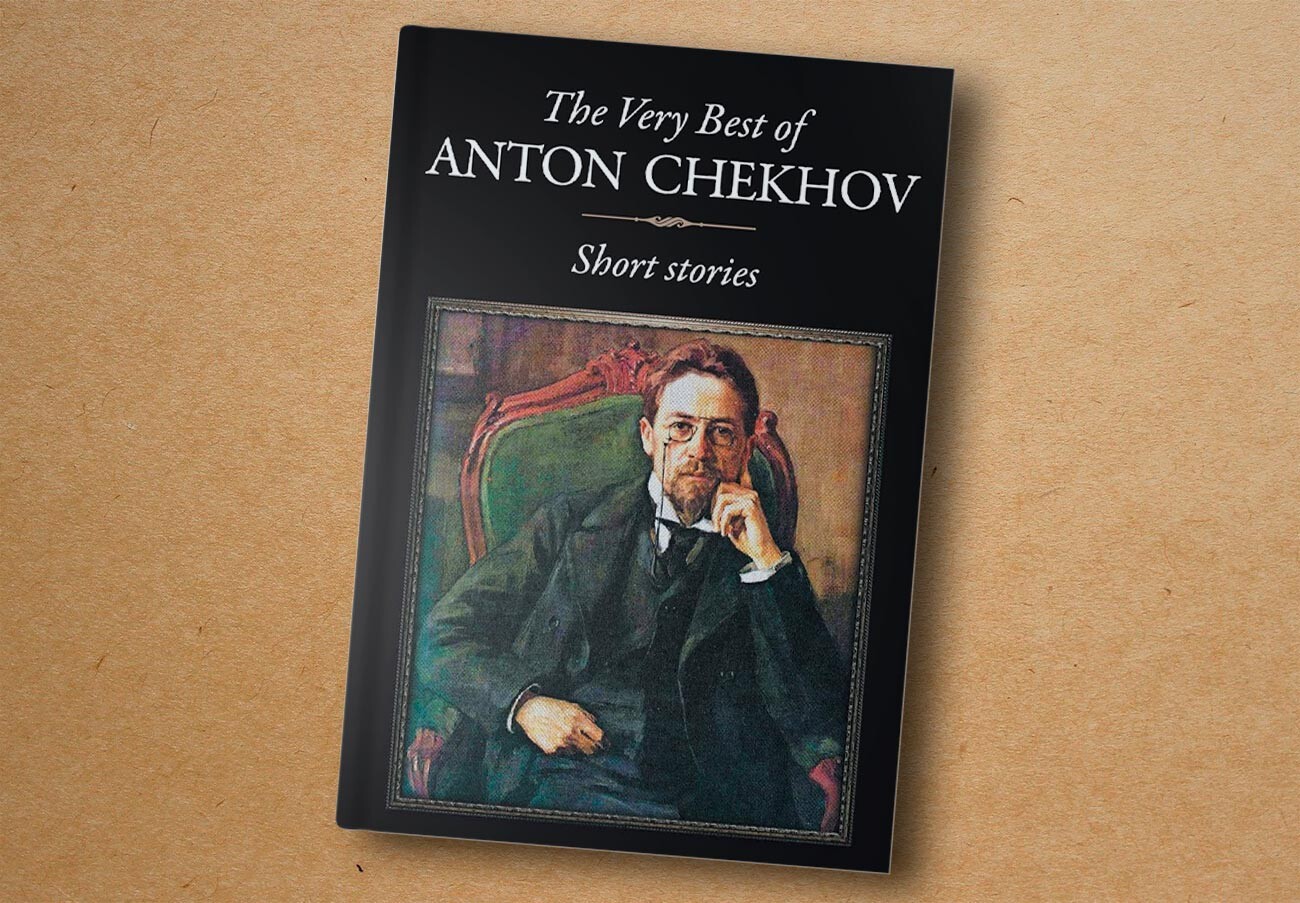
Chekhov is considered a master of the short genre. The author of the aphorism "Brevity is the sister of talent" wrote more than 500 tales, which can be put on an artistic par with any great novel. Despite his success as a writer and playwright, Chekhov continued to practise medicine throughout his life, drawing many of his characters from his wide range of patients. Chekhov wrote many fine short stories, too numerous to mention, but Ward No. 6 (about individual and, more dangerously, collective madness), The Darling (about a woman who is subsumed by her husband’s interests) and Man in a Case (about fencing oneself off from the outside world) are particularly unmissable.
READ MORE: 10 must-read short stories by Anton Chekhov
After the success of the plays "The Seagull" and "Uncle Vanya", commissioned by the Moscow Art Theater, Chekhov wrote a new drama, one that is still a staple in the repertoire of many Russian and foreign theaters. The three sisters of the title are young, progressive-minded women; their father has died, and they live with their brother and spend all day receiving guests. They make plans to leave their provincial town for the bright lights of Moscow, where they will work and do worthy deeds. But their lofty dreams remain just that… Very Chekhovian.
Chekhov’s last play. The bankrupt landowner Ranevskaya is forced to sell her house with its lovely cherry orchard. To her horror, the new buyer proposes to cut it down, divvy up the land and rent it out to summer dacha-goers. The play, which ends to the sound of trees being felled, is about the decline of the aristocracy. A new ruthless world is replacing the old. A year after it was written, the great theater directors and producers Konstantin Stanislavsky and Vladimir Nemirovich-Danchenko staged it at the Moscow Art Theater to tremendous acclaim.

The most famous play by the proletarian writer Gorky and a hymn to the lower strata of society. After reading the drama, Tolstoy exclaimed to Gorky in surprise: "What are you writing this for?" He could not imagine that the theater-going public would be interested in a play about a homeless shelter, depicting prostitutes and alcoholics, quite literally warts and all. However, Tolstoy was proved wrong, and this gritty real-life drama was a great success on the stage of the Moscow Art Theater, as well as in Germany.
A novel about the revolution and the workers’ movement. Gripped by revolutionary fever, factory worker Pavel Vlasov discusses social issues with friends and starts distributing leaflets about the oppressed proletariat. However, he is arrested, whereupon his mother starts handing out leaflets in his place… In 1926, the Soviet director Vsevolod Pudovkin made a silent film based on the novel, which became a classic of early Soviet cinema.
Like Tolstoy, Gorky wrote an autobiographical trilogy. The first part, Childhood, is a vivid, colorful story of a boy’s life growing up in Nizhny Novgorod. Maternal love, grandfatherly beatings, the school of hard knocks – Gorky experienced all this and describes Russian provincial life in an incredibly atmospheric way.
READ MORE: 5 reasons why Soviet writer Maxim Gorky is so great
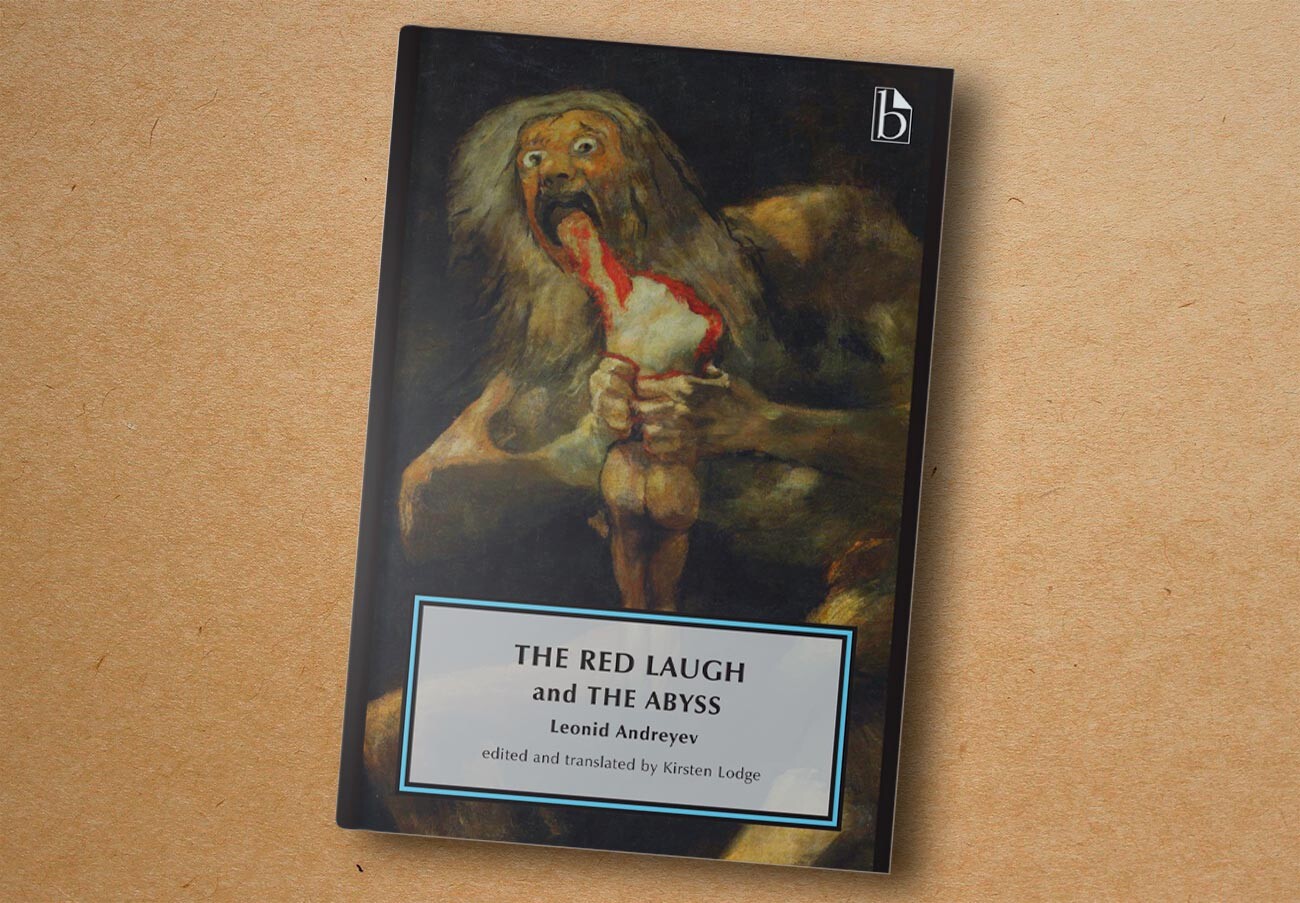
Andreyev’s style is like a fingerprint: unique. His neurotic literary world is overpopulated with thoughts, words and metaphors. In The Red Laugh, written at the height of the Russo-Japanese War, Andreyev, one of the most talented Russian writers of the Silver Age, addresses the horrors of battle. The narrator, an artillery officer, finds himself in the midst of the hostilities. He is pursued by a haunting “red laugh”, a kind of blood-associated metaphor for the senselessness of war. War is at once "terrible necrotic ice", "red air", "the resurrected dead", "red laughter" and, finally, genuine, murderous madness. If there is one antimilitarist tale capable of evoking a profound physical revulsion for war, it is undoubtedly The Red Laugh.
Andreyev’s prose explodes like a Molotov cocktail of mysticism, religion, existentialism and symbolism. “It is not death that is terrible, but knowledge of it; and it would be quite impossible to live if a person knew the precise hour of his death,” wrote Andreyev in this gloomy, pessimistic tale about revolutionaries sentenced to the gallows. It is a powerful treatise on life and death, in which the writer's inner state chimes with the feelings of his condemned protagonists.
“He is Russian to the very core of his being; inside him Russian chaos stirs,” philosopher Nikolay Berdyaev said about Andrey Bely, naming the symbolist writer as the heir to the traditions of Gogol and Dostoevsky. Boris Pasternak compared Bely to Marcel Proust, and called James Joyce "a disciple of Andrey Bely". Like Ulysses, the modernist Petersburg employs stream-of-consciousness techniques, alluding to the city’s foundation by Peter I (the Great) in 1703; St Petersburg itself becomes an artistic unit in its own right against the backdrop of the Russian Revolution of 1905.
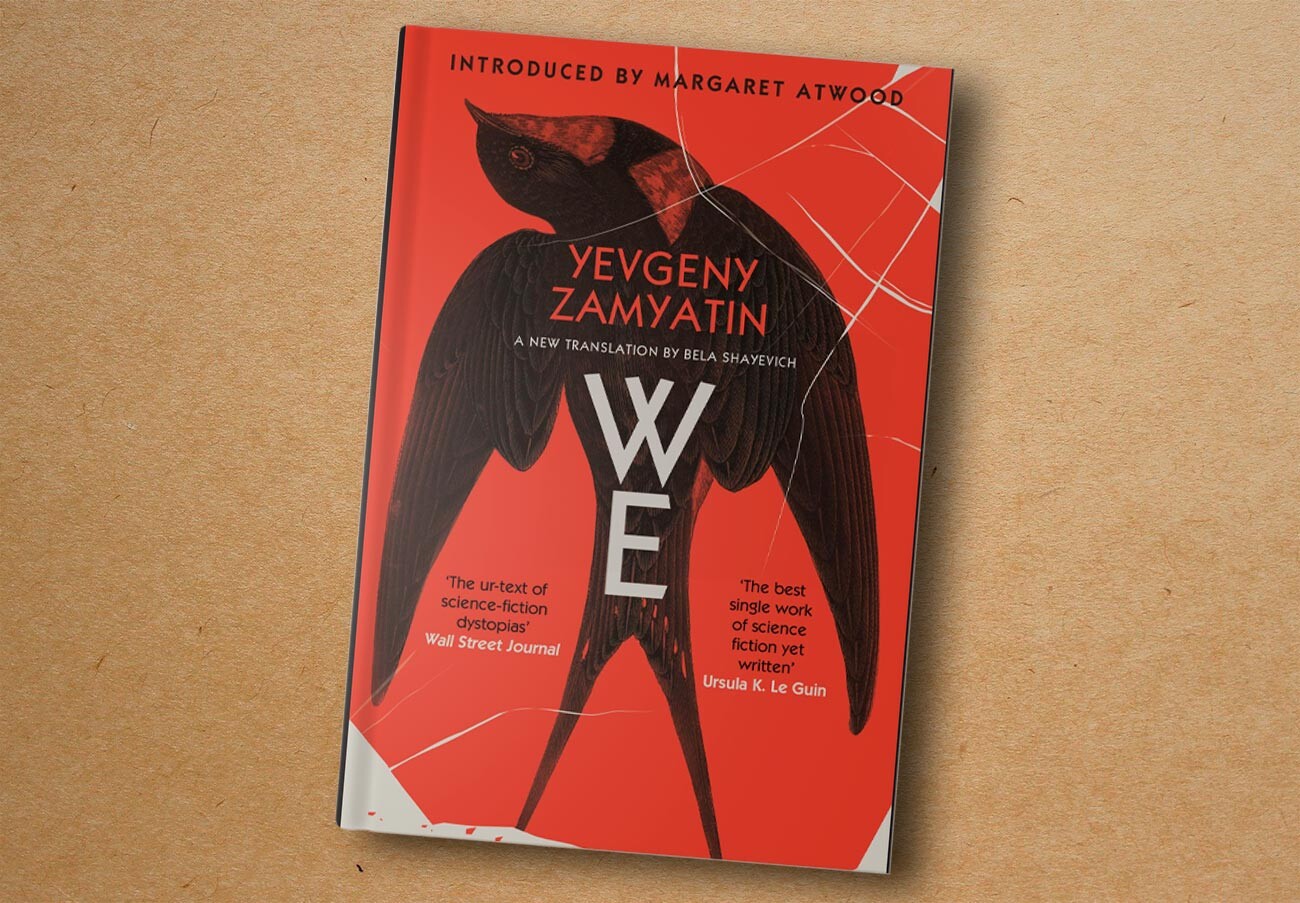
In his prophetic dystopian masterpiece, Zamyatin artfully describes a totalitarian state built on the principles of total control over the individual. The novel is set in the remote future, in a city where everything is ruled by the Time Tablet, which dictates their lives, and people’s names, as in a concentration camp, are replaced by letters and numbers, such as, D-503 or O-90. All citizens of OneState must keep to a rigorous schedule day and night; even love-making is strictly regulated.
For all its frightening realism, Zamyatin's "We" finds room for irony and allegory. "We walk — a million-headed body; and in each one of us resides that humble joyfulness with which in all probability molecules, atoms and phagocytes live." Zamyatin's novel shaped the weltanschauung of at least four literary geniuses (George Orwell, Kurt Vonnegut, Aldous Huxley, Vladimir Nabokov), despite never being published in Russia during the author's lifetime. The dystopia was first published in its entirety in English in 1924.
In his poignant tale of agonizing love, Bunin paints a psychological portrait of Mitya, a young man with "Byzantine eyes" who is head-over-heels in love with Katya, a student at a private theater school. Love, as everyone knows, is just one step (more precisely, one shot) away from jealousy, especially when unrequited and hopeless. "There is nothing on earth or in heaven more terrible, more attractive and more mysterious than love," wrote Bunin. How right he was!
Ivan Bunin, the consummate master of short malleable prose, was the boldest of all Russian writers in describing sensual love. “Each of us likely has some especially dear love memory or some especially grievous love sin,” he wrote. Bunin raised passion, lust and love to a whole new level in his renowned collection of short stories Dark Avenues, dedicated to the backstage workings of love, the cultivation of feelings and the clash of opposing views.
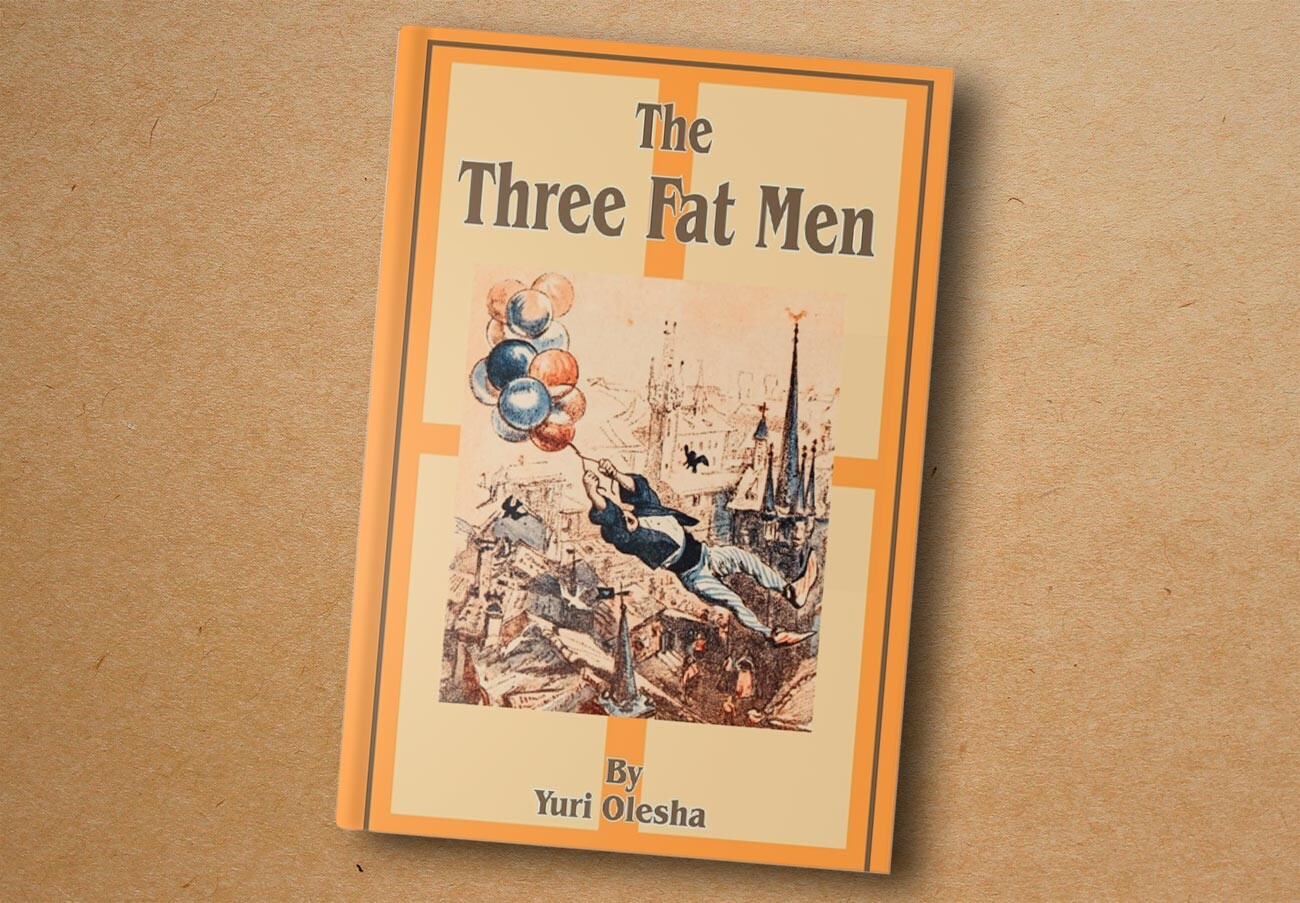
After the publication of “The Three Fat Men”, the first “revolutionary fairy tale” in Soviet literature, Olesha woke up famous. After all, he had penned a work of truly European dimensions: revolutionary in concept, quixotic in spirit, expressive in content. The novel takes place in a country ruled by a greedy and insatiable aristocracy, led by the “Three Fat Men”. A lonely boy called Tutti is to become their heir. The child is not allowed to play with his peers; his only companion in life is a doll named Suok. But it’s not all bad. An intrepid scientist, the Doctor, brings hope of a "bright future" during an uprising led by Prospero the Gunsmith and Tibul the Acrobat.
More than one generation of children and adults has been brought up on “The Three Fat Men”. Translated into many languages, the book has admirers worldwide.
Envy marks the pinnacle of Yuri Olesha's literary work. “I am convinced that I have written a book that will live for centuries,” the author himself claimed modestly. The novel’s protagonist, Nikolay Kavalerov, is an intellectual, a dreamer and a poet – an outsider in Soviet reality. The single-minded head of the local meat processing plant, Andrey Babichev, is the polar opposite. Kavalerov has no hope of emulating the “sausage maker” Babichev. Envy is his lot in life. He dreams of adulation, much like a convict dreams of freedom. “In our country, the roads of glory are blocked by barriers… A gifted person must either wither away or raise the barrier and face condemnation.” Kavalerov is the alter ego of Olesha himself, who never managed to adapt to the realities imposed by the builders of communism.
"Babel wrote about Jews with a brisk, at times scornful knowingness," remarked John Updike. Babel's famous Odessa Stories about "gallant" Jewish gangsters and their irreplaceable leader Benya Krik inspired a whole generation of American writers, including Bernard Malamud, Saul Bellow and Philip Roth, to embark on their own literary quests in the same criminal vein. Born in Odessa, Babel spent most of his time between the hammer and the anvil, trying to remain in touch with his Jewish roots while maintaining a kind of status quo. Humor allowed Babel to distance himself from his characters, not to fraternize with them, while remaining on a friendly footing.
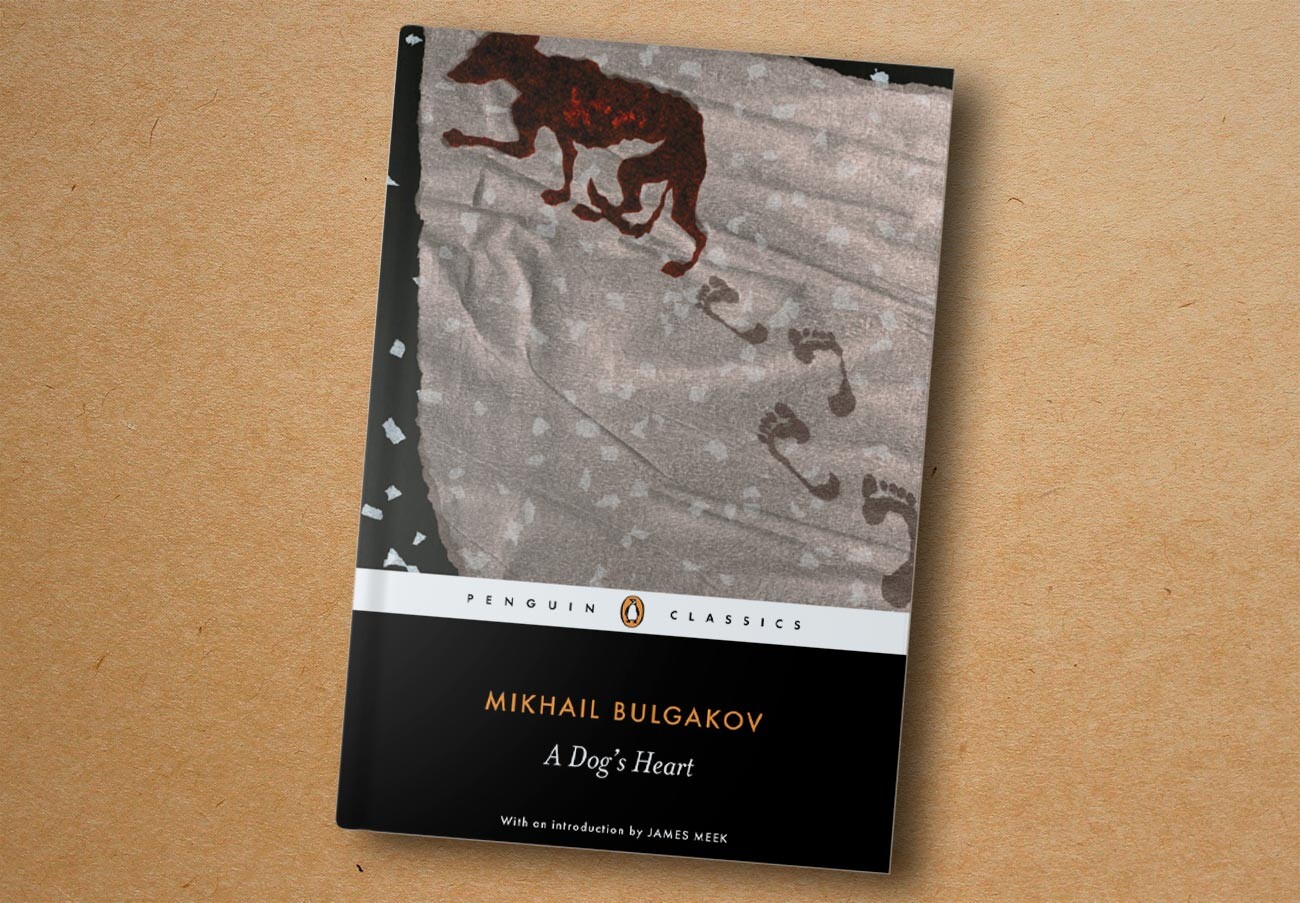
Written in 1925, this novella was published only in 1987. The Soviet censors banned it for ideological reasons. At the center of the work, set in the mid-1920s, is the brilliant surgeon Professor Preobrazhensky (whose name means “transformation”), who undertakes an unprecedented experiment. He transplants a human pituitary gland into a stray dog, which before his eyes turns into a humanoid creature, who adopts the absurd name Poligraf Poligrafovich Sharikov. He is primitive and uncouth in the extreme, drinking, smoking and swearing like a sailor.
Sharikov immediately moves into the professor’s seven-room apartment in Moscow as the new owner – a metaphor for the revolution and the post-1917 dispossession of the bourgeoisie. Although from a scientific point of view, the professor's experiment is a phenomenal success, Bulgakov, with a nod to Kafka’s "Metamorphosis" and Mary Shelley’s "Frankenstein", warns against such "transformations" – better to let sleeping dogs lie, quite literally.
Bulgakov was born in Kiev (then part of the Russian Empire) into a large family. The warm spiritual atmosphere of his childhood is reflected in his masterful play The Days of the Turbins, which he reworked into the epic novel “The White Guard.”
“The White Guard” is not only an outstanding historical novel written in the finest Tolstoyan traditions, but also a “Russian Forsyte Saga” – about a family of Russian intellectuals, and their friends and relatives, who find themselves caught up in the blood-soaked civil war that came hard on the heels of the October Revolution.
Bulgakov's greatest novel did not see the light of day until 1966 in the wake of the Khrushchev Thaw, 26 years after the writer's death. It is a satirical and supernatural tale of how the devil and his demonic retinue pay a visit to 1930s Moscow. In this metaphysical work, Bulgakov’s Satan (called Woland, an ancient Germanic name for the devil) is an ambivalent figure, "part of that force that eternally desires evil and eternally does good." Woland opposes the new evil: bureaucratic, impersonal, Soviet. The only salvation in the novel, as in life, is through love and self-sacrifice. Faust-like, Margarita sells her soul and becomes a witch in order to save the Master, the man she loves. The book is known for the aphorism: “Manuscripts don’t burn.”
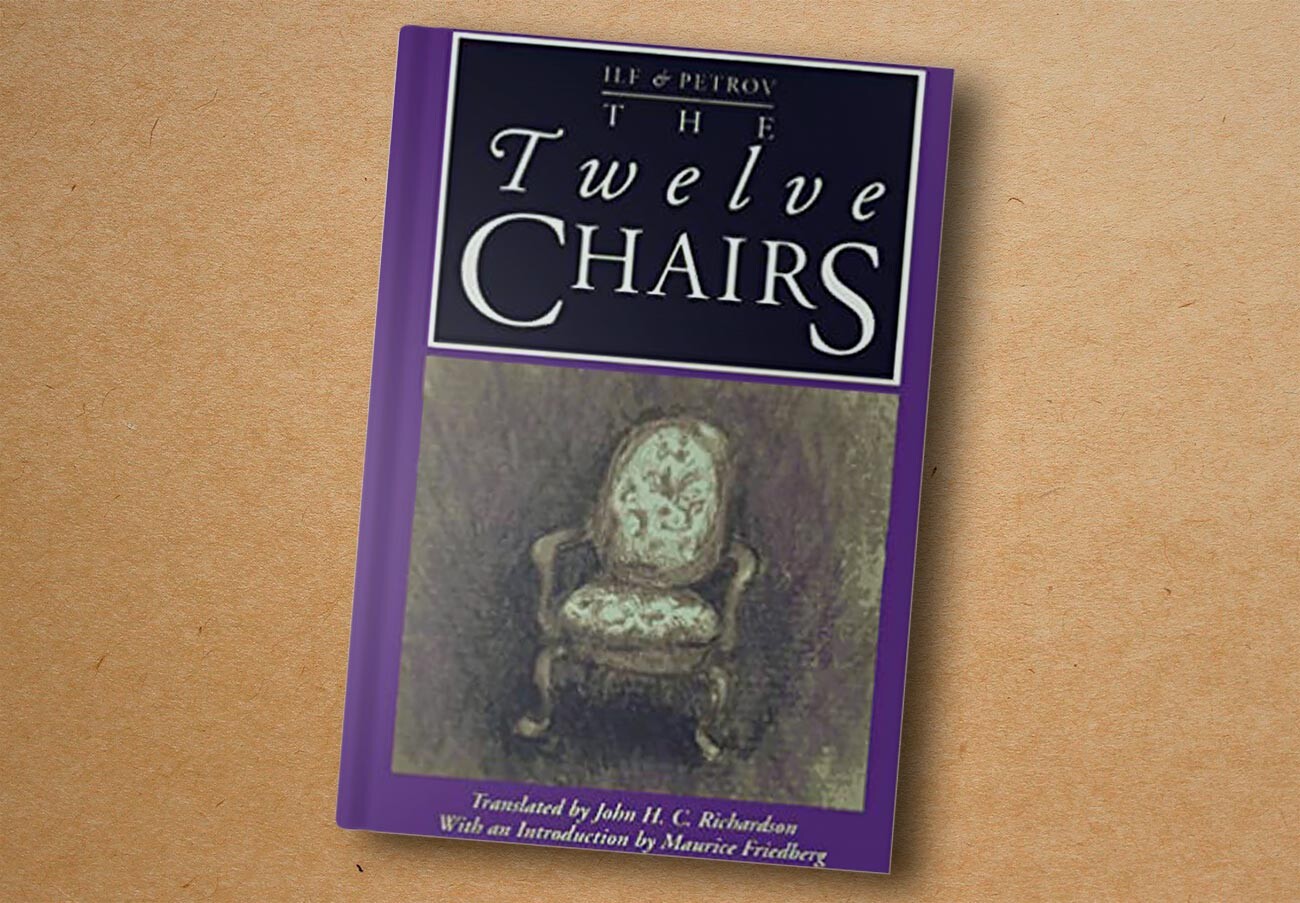
The charming rogue Ostap Bender and his naive sidekick Kisa Vorobyaninov set off in search of Madame Petukhova's diamonds, which are hidden in one of the 12 chairs from the family's dining room set that went missing after the revolution. On the adventure-laden way, they hone their skills as master conmen. This cult novel is a rich source of sayings and aphorisms, plunging more than one generation of readers into the atmosphere of 1920s Soviet Russia. The work is not only a treasure trove of kitchen-sink satire and folk humor, but also a skilfully veiled mockery of Soviet power and ideology.
The likeable swindler Ostap Bender is (only just) still alive. In this sequel to "The Twelve Chairs", he attempts to become a millionaire by fair means or foul (mostly foul) and fulfil his childhood dream of moving to Rio de Janeiro. All he has to do is track down the elusive millionaire Alexander Koreiko and blackmail him. What could possibly go wrong?
Soviet writer Mikhail Sholokhov wrote "And Quiet Flows the Don" at the tender age of 22. In 1965, he was awarded the Nobel Prize in Literature for this four-volume novel, recognized as one of the most significant works of 20th-century Russian literature. A sweeping historical saga about the life of the Don Cossacks during World War I and the Russian Civil War, it is saturated with sweat and blood, violence and cruelty, suffering and lust.
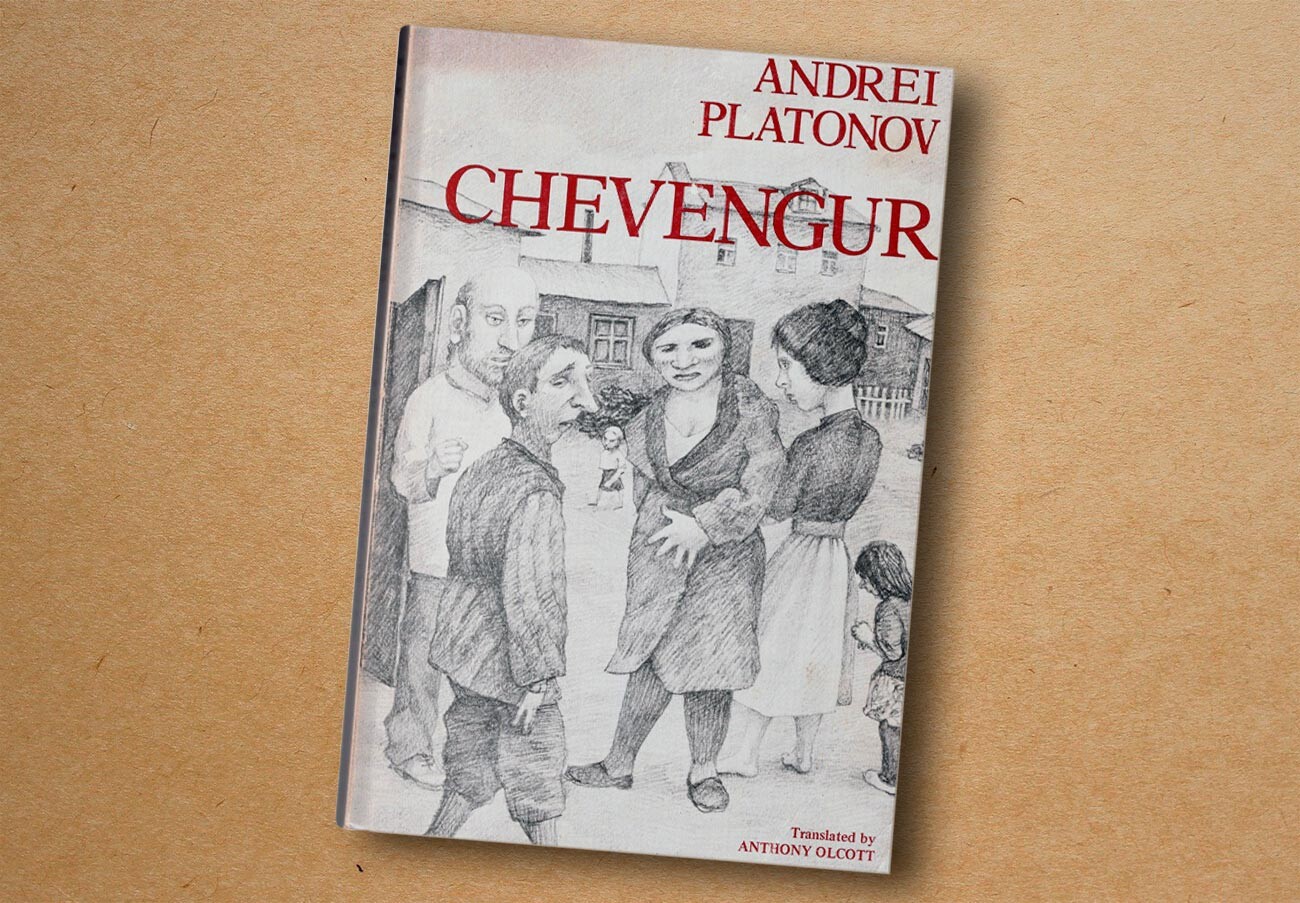
The poet Joseph Brodsky put Platonov on a par with Proust, Kafka and Beckett. In this and other works, Platonov artfully satirizes the utopian Soviet plan for building a socialist society, exposing the bureaucratic nonsense of Soviet ideology.
"Chevengur" (Platonov's only completed novel) is a behind-the-scenes look at Soviet life during the NEP (New Economic Policy) period. Chevengur is a utopian city where communism is being built at a record pace. The result is an impending catastrophe, which Platonov, who witnessed the Stalinist collectivization, describes with devilish wit and cold-bloodedness.
The novel was actually scheduled for publication, but banned by the censors at the last minute for ideological reasons, stating that Platonov was "rocking the boat" by endangering the very notion of building socialism. The novel was not published in full until 1988.
"The Foundation Pit", a gloomy and disturbing novel of Kafkaesque proportions, tells about the "benefits" of communism in the USSR. A group of people somewhere in the wilderness are digging the foundations of a "common proletarian home", so that one day everyone will live "happily ever after" in the city of the future. Platonov depicts hunger and death, and workers, peasants and officials stripped of all goodness, focused day and night on an endless, senseless construction project.
Written in 1929-30, "The Foundation Pit" is a biting satire of Stalinism and oppressive bureaucracy that destroys hope and faith in humanity. Pre-empting and echoing George Orwell’s "1984", Platonov shows the twisted face of collectivism, devoid of human emotion and feeling.
This novel became the most published work of fiction in the USSR. Partly autobiographical, it charts the rise of the Soviet state through the biography of protagonist Pavel (Pavka) Korchagin. A man of simple roots, Pavka stands out for his endurance, diligence and selflessness. He joins the Red Army, then the Cheka (secret police).
Through his protagonist, Ostrovsky depicts all facets of life in the young Soviet state, including the most dreadful and problematic. However, due to ideological issues, the text of the novel was changed many times, not always with the author’s consent. It wasn’t until the late 1980s that Ostrovsky’s original text was published in full.
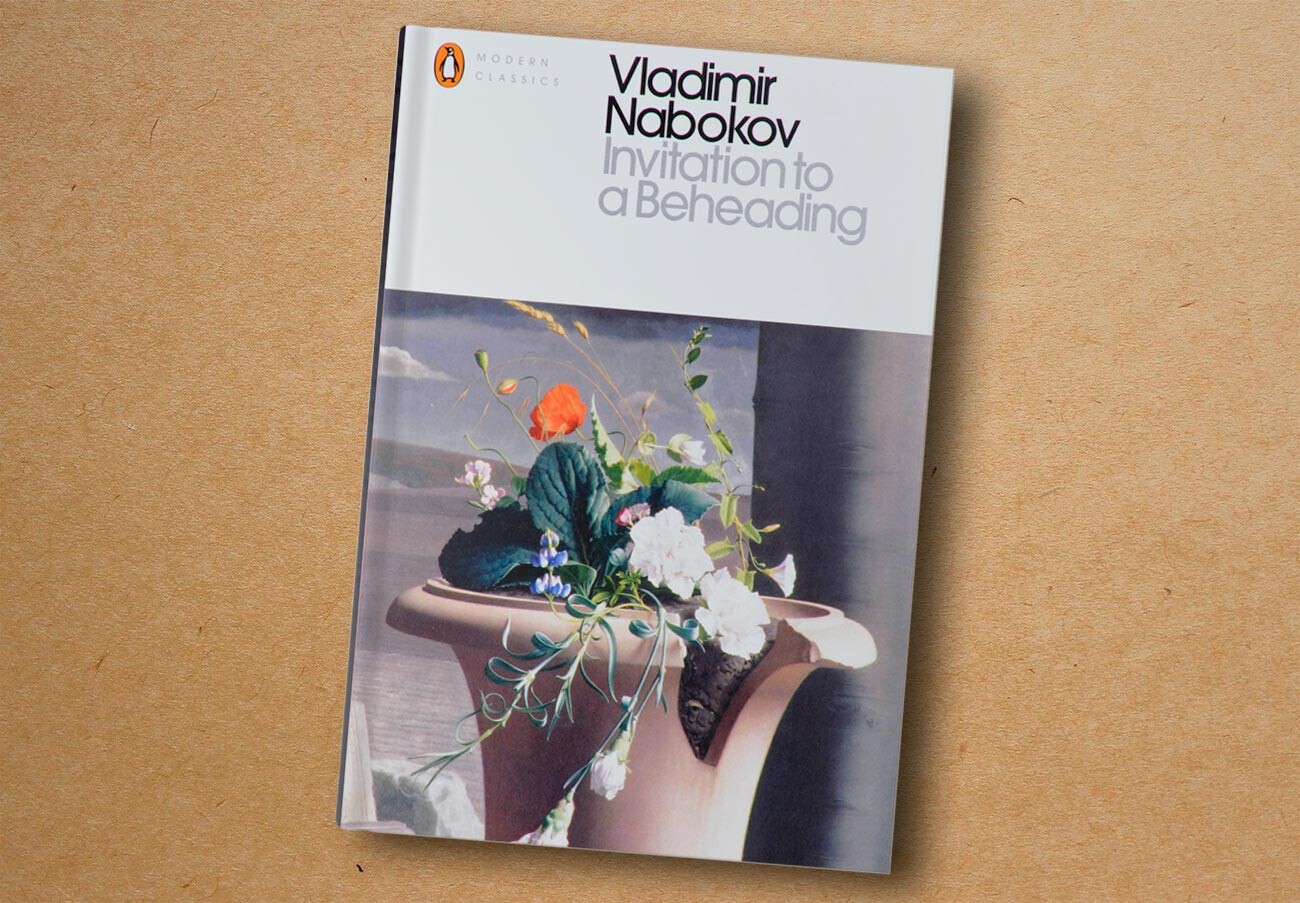
Nabokov's last novel, written in Germany before he moved to France in 1937. Although the grim reality of Nazi Germany is reflected in the novel’s premise, Nabokov objected to its one-sided deconstruction as a political pamphlet. The writer himself considered it his best work and his "only poem in prose." Whichever way you slice it, Invitation to a Beheading is a novel about the tyranny of triviality, and how to resist it through the "ancient innate art of writing."
Nabokov's last novel in Russian is a tour de force, considered by many to be the pinnacle of his art. From a philosophical viewpoint, it is a meta-novel, a kind of literary wedding cake, in which each layer is saturated with a deep existential meaning. As the epigraph to "The Gift", Nabokov borrowed a seemingly simple exercise from a Russian grammar textbook: “An oak is a tree. A rose is a flower. A deer is an animal. A sparrow is a bird. Russia is our fatherland. Death is inevitable.” Life, we are told in Nabokov's timeless novel, is a brief interlude between birth and death, consisting of a thousand contradictory trifles.
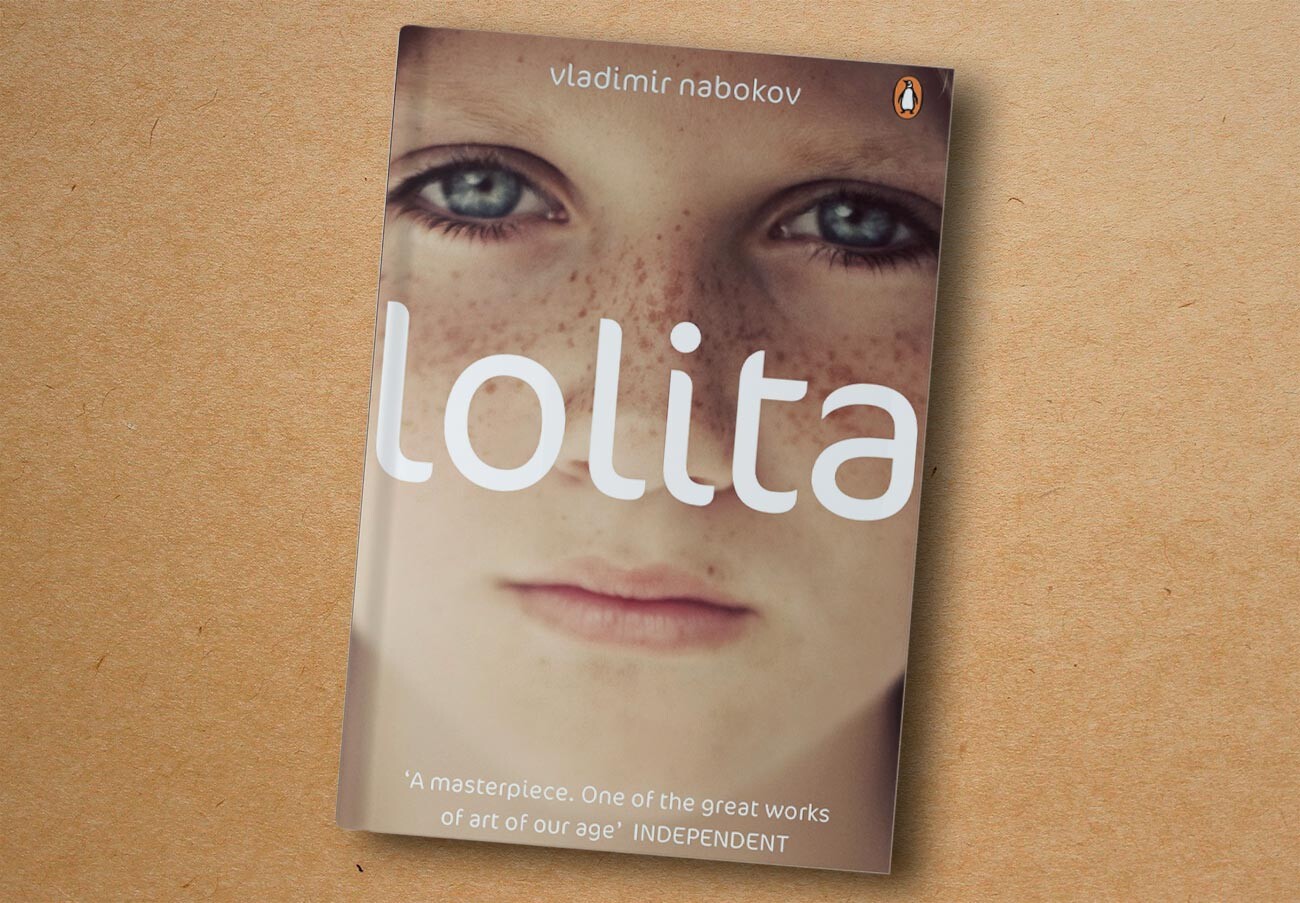
Nabokov wrote his most famous novel in English and translated it himself into Russian twelve years later. The story, in which the protagonist (Humbert Humbert) loses his moral compass and falls for a 12-year-old girl named Lolita, shattered all canons, conventions and taboos. That said, "Lolita" is not a novel about sin, but a saga of obsession, irrepressible craving and self-flagellation.
Zoshchenko, who possessed a rare sense of humor, equated the work of the writer with the production of white lead: both are toxic. His autobiographical tales, written between 1937 and 1945, are a touchstone of the generosity of spirit and warmth of heart of one of the most underappreciated writers of the Soviet period. Although the collection of Lelya and Minka stories seems to be primarily for children, every adult will find much wisdom and sadness in them.

In his confessional, highly personal "Before Sunrise", Zoshchenko acts as his own psychoanalyst, ruthlessly dissecting his most intimate childhood fears, traumas, anxieties and phobias, including fear of water, food, thunder, his own body, poverty, the opposite sex, etc., etc. His personal experiences are described with such hard-hitting realism that in 1943, after publication of the first few chapters, the work was banned (Stalin is known to have detested it). Zoshchenko's encyclopedia of fears was first published in full only in 1973, in the United States.
During his lifetime, Kharms was not popular as an adult writer (especially with the Soviet authorities), and was known mainly as an author of nursery rhymes. The bulk of his work, which was familiar only to a small circle of literary connoisseurs, could not be published in the USSR, because Kharms was one of the founders of the Russian literary tradition of absurdism and surrealism. His story "The Old Woman" represents the pinnacle of his prose craftsmanship, one of the most enigmatic and occult works in Russian literature, echoing the European tradition of existentialism à la Camus and Sartre.
This playwright wrote one of his most impactful plays during World War II. A cruel dragon terrorizes the inhabitants of a small town, who are forced to constantly appease the monster with sacrifices in the form of young nymphs. Eventually it is Elsa's turn, and the compliant townsfolk do not even try to protect the poor girl. Why challenge a system that has been in place for the past 400 years? And yet, someone disagrees with the herd. Born with an innate sense of justice, the fearless Lancelot is determined to slay the Dragon.
Schwartz's fantasy play has a cryptic message for those able to read between the lines: always fight evil monsters! Although on the surface it seems to be a “children’s fairy tale/horror story”, “The Dragon” is a blatant attack on Stalin, the Soviet regime and totalitarianism. The play was first staged in 1943 and banned for many years thereafter.
Valentin Kataev was the first writer in Soviet literature to tell about the war through a child’s eyes. During the war years, very many orphaned children were attached to Red Army regiments, some of whom became known as "sons of the regiment." The stories of several children are known, but which of them Kataev based his hero on is not. In the story, the boy Vanya Solntsev, who has lost his parents during the war, is discovered by a scout party and does not want to return to the rear, preferring to remain with the soldiers on the front line. When he is forced to go back, he flees. In the end, the child is allowed to stay and even take part in combat missions.
READ MORE: How Soviet kids became war heroes
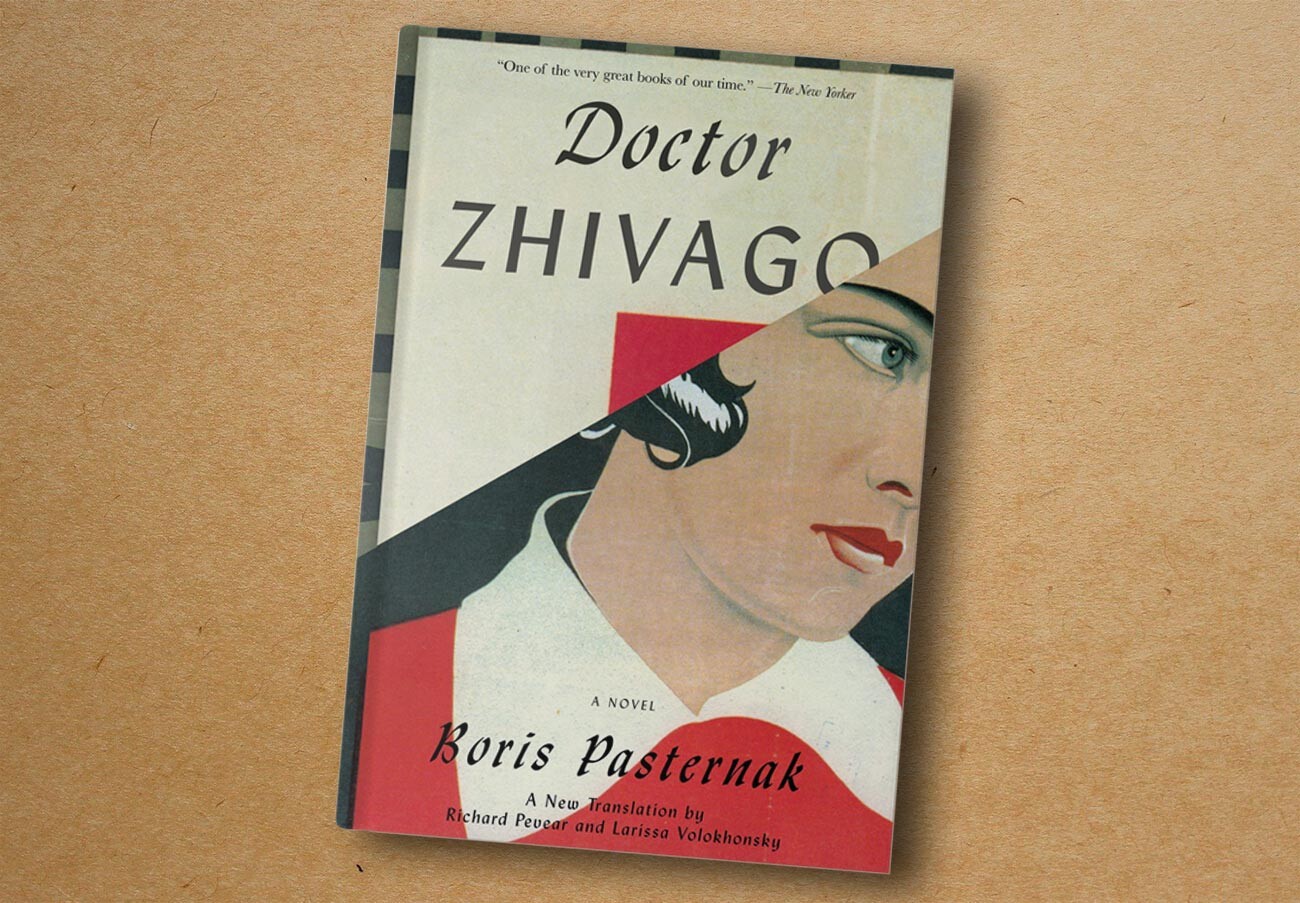
The First World War was a catastrophe for Russia, burying the dreams of an entire generation. In his outstanding modernist novel, "Doctor Zhivago," Pasternak paints in broad strokes not only the devastating war, the destructive power of the revolution and the dashing of hopes, but also the resilience of the human spirit.
"Doctor Zhivago", a tale of an unquenchable love stronger than death, is perhaps the best-known 20th-century Russian novel in the West. Pasternak worked for ten years on the book, for which he was awarded (but forced to decline) the Nobel Prize in Literature in 1958.
The first edition of this novel was published immediately after the war in 1946. It charts the exploits of young underground activists who form the “Young Guard” secret partisan organization in Krasnodon (now Ukraine), which resists the Nazis. Nearly all members of the real Young Guard were brutally tortured and executed by the Germans. It is about them, based on eyewitness accounts, that Fadeyev wrote. When the book came out, however, it was harshly criticized by Stalin for supposedly belittling the role of the Communist Party in the anti-fascist struggle. Fadeyev had to rewrite the novel, and a second, revised edition was published in 1951.
The world’s best-known book about the Soviet camps took ten years to write. Divided into seven parts, "Archipelago" describes the history and practice of the Soviet Gulag (a Russian acronym that stands for “Main Directorate of Camps”). The book is based on the personal experiences of the author, who spent around eight years in various camps, and the stories of more than 250 inmates with whom he spoke. Shortly after the publication in Paris of the first volume (December 1973), Solzhenitsyn was expelled from the USSR, and all his previously published works were destroyed (at least those the authorities could find).
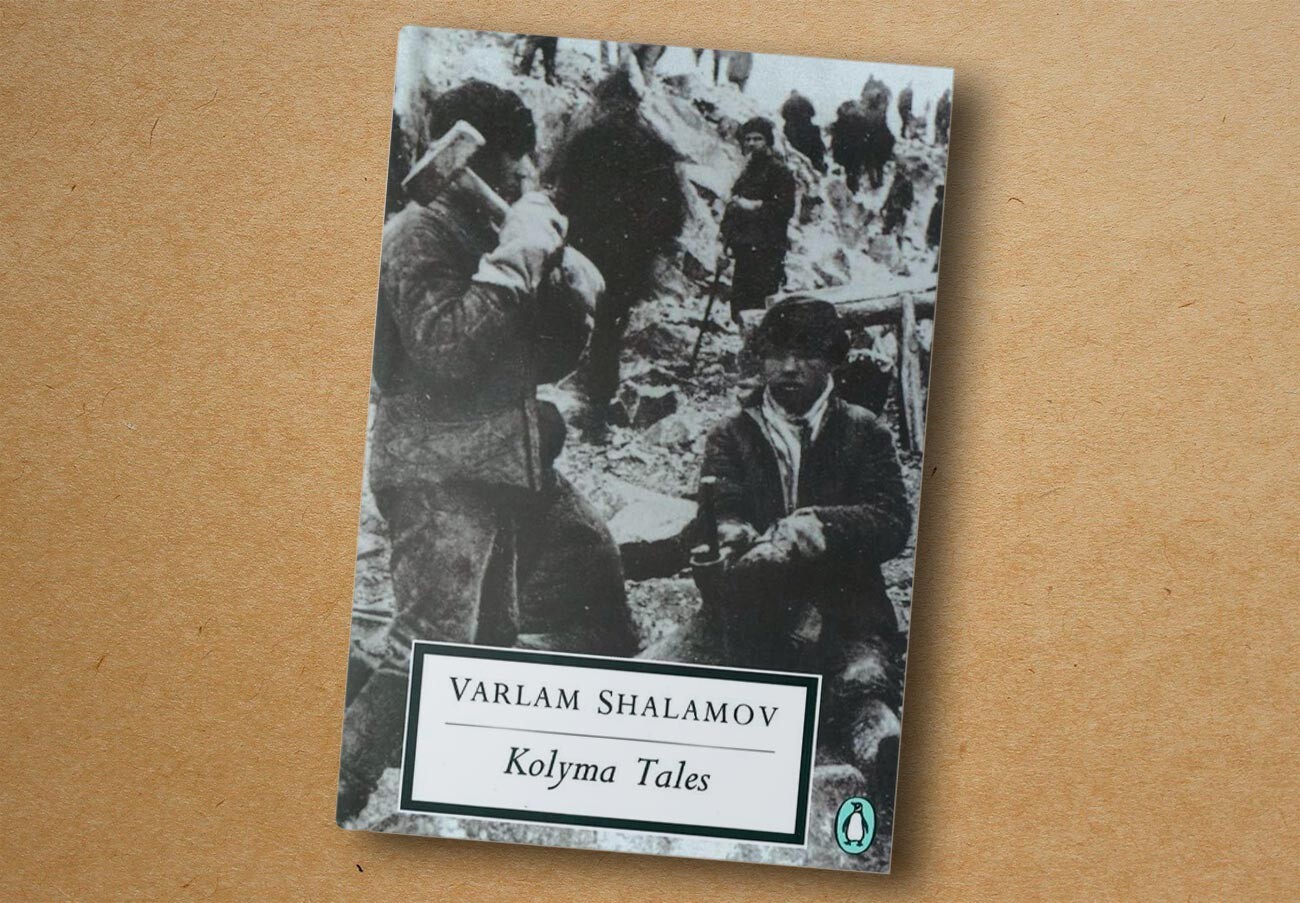
Kolyma Tales is strikingly different from any other camp prose, primarily Solzhenitsyn's The Gulag Archipelago (the two authors maintained a fiery correspondence). Shalamov’s focus is on what can happen to the human body and soul in the penal camps, which aim to crush individuality and personality, and often destroy a person physically. His own health ruined by 19 years in the Gulag, he nevertheless left for posterity a brutal and terrifyingly truthful account of one of the most ruthless repressive systems in history.
“Everyone feels guilty before a mother who has lost her son in war; throughout human history men have tried in vain to justify themselves,” wrote the author of Life and Fate, a sweeping novel that unfolds against the backdrop of the titanic Battle of Stalingrad from September 1942 to February 1943. Life and Fate is a relentlessly bleak tale about the hardships of war, with no hint of light at the end of the tunnel.
This cycle of (more than 50!) books, stories and novellas by science fiction writer Kir Bulychev (real name Igor Mozheiko) is familiar to all Soviet children not only in print, but as the popular Soviet TV miniseries Guest from the Future. The main character in the cycle, Alisa Selezneva, lives in a distant future world designed according to the laws of what seems like Soviet steampunk. Utopian communism reigns: there are no authorities, everything is governed by scientists with supernatural powers. In many ways it is the ideal world, one where interplanetary travel and time travel are possible. It is these sci-fi tropes that enable Alisa to transport herself from "her" 2084 to Soviet 1984.
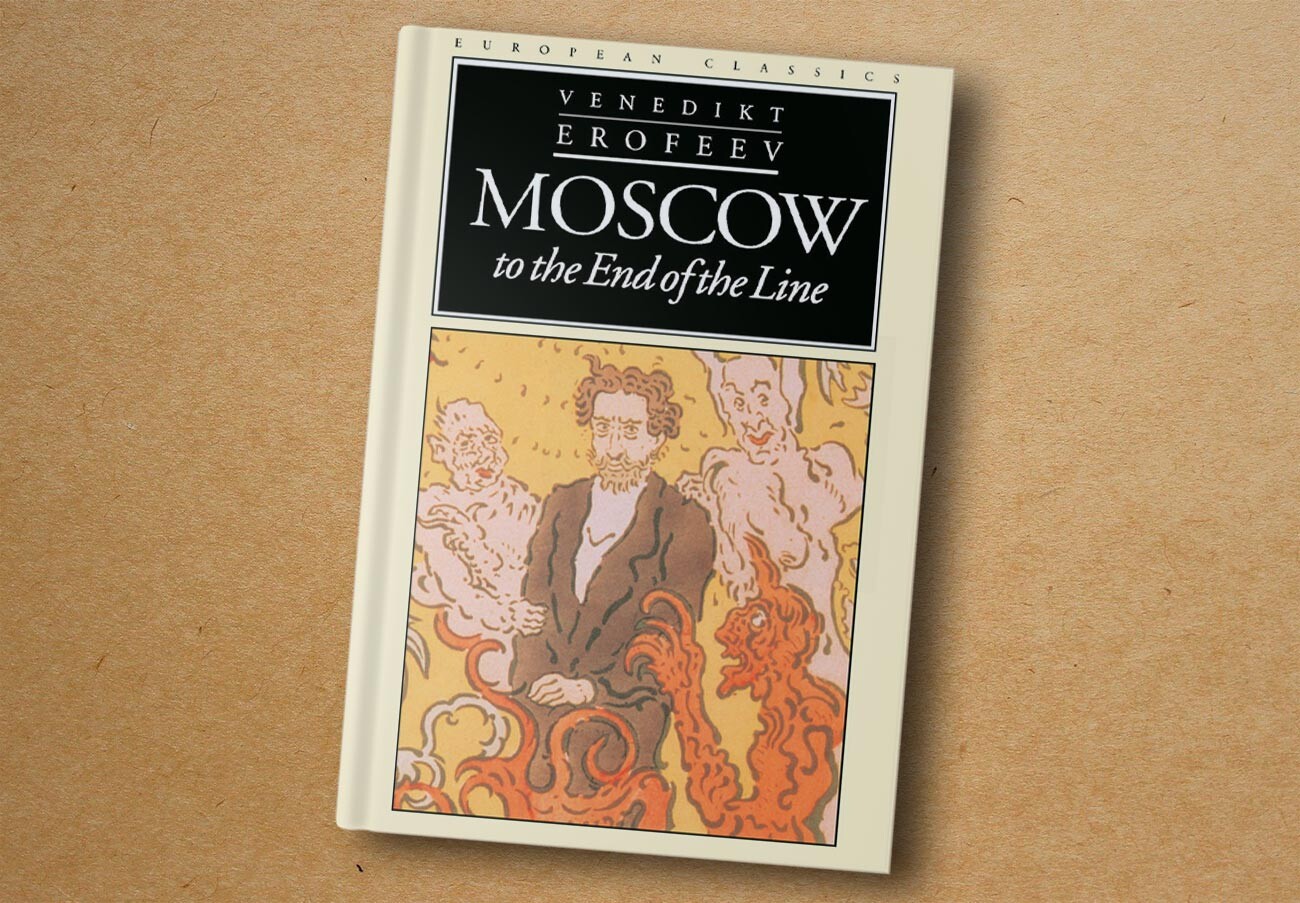
Yerofeyev had one of the most brilliant minds of his generation: he quoted Kant and Leibniz and could recognize any symphonic work by ear. At the same time, he was an outcast, expelled from his institute for free-thinking and forced to make ends meet doing odd jobs. Whilst working on a construction site outside Moscow, he composed the prose poem "Moscow-Petushki" (a.k.a "Moscow to the End of the Line"), which, despite being in prose, is Russian literature’s answer to Dante’s "Divine Comedy".
The poem’s protagonist attempts to travel from Moscow’s Kursk railway station to his wife and son in the town of Petushki near the capital. With a bottle of vodka in hand (an integral part of the Soviet reality of that era), he journeys through all the circles of Soviet hell (alas, there is no paradise, or even purgatory, in this gloom-laden work). The last strolling minstrel of Russian literature, Yerofeyev, through laughter and tears, created a terrible requiem for the Soviet era, a poem that survived and largely destroyed its creator: the writer died from the effects of alcoholism just one year before the collapse of the USSR.
The most popular (published in 22 countries) of the Strugatsky novels is a sci-fi dystopia set in the English-speaking world, in the fictional town of Harmont. A few years before the events of the book, an alien civilization or entity visited Earth, leaving behind several "Zones" – areas full of unexplained phenomena where strange happenings occur. As one of the characters remarks, it resembles a kind of extraterrestrial roadside picnic, after which strange phenomena and objects were left strewn like empty bottles and food wrappers. Earthlings who dare to explore the Zones are called "stalkers" ("Roadside Picnic" was the literary source of Andrey Tarkovsky’s classic 1979 film "Stalker"). The book’s twisting plot follows a stalker who ventures into one of the Zones in search of that very human yet inaccessible desire: happiness.
Limonov’s first and most famous novel was a sensation: written and first published in New York, it was the first Russian-language book to contain explicit, graphic prose in the manner of Charles Bukowski and other American writers of the latter half of the 20th century.
Limonov dispassionately describes the physiological details of hetero- and homosexual sex acts and peppers his characters’ speech with obscenities. But more than that, it is an autobiographical statement about the feelings of a lyrical hero, an emigrant, a piece of human debris cast out by the Soviet empire and by fate herself into the arms of a new, unknown life.
Even in post-Soviet Russia the novel had trouble finding a publisher, with many printing houses refusing to handle the “obscene” text. Besides its content, the work is a linguistic and way-of-life monument to that most fraught era for Soviet emigrants.
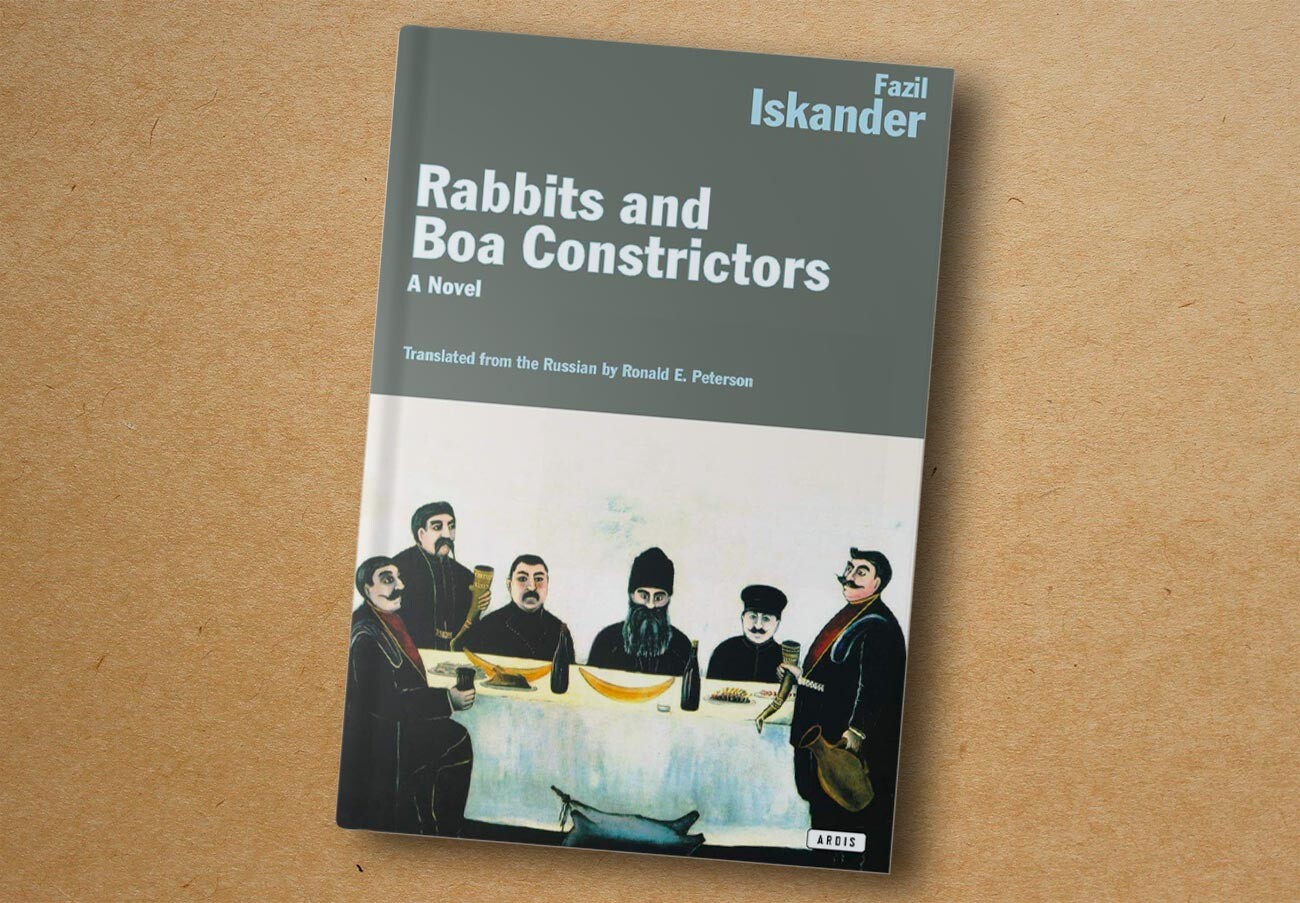
“I am a Russian writer, but a singer of Abkhazia,” said the Sukhumi-born Iskander. He was nominated for the Nobel Prize for his opus magnum: “Sandro from Chegem,” a true epic in celebration of Abkhazia. A bigger hit among Soviet intellectuals, however, was “Rabbits and Boa Constrictors,” a philosophical parable about the relationship between the upper and lower strata of society, as exemplified by a make-believe country of rabbits and boa constrictors ("the model demagogic state").
Many quotations from the book have become Russian proverbs ("Where there is talk of victory, they have either forgotten, or are hiding from, the truth"), and the author's name is sometimes mentioned in the same breath as such greats as Anton Chekhov, Leo Tolstoy and George Orwell. He has also been described as the "Russian Gabriel Garcia Marquez."
A Soviet writer hailing from a Kyrgyz village, the bilingual Aitmatov glorified two cultures at once: he wrote in Russian, but his words painted Kyrgyzstan and Central Asia and their folk epics. The beautiful love story Jamila, in which a girl from a Kyrgyz village falls in love with a wounded soldier while her husband is at the front, brought him worldwide fame. But his best-known and greatest work is Scaffold, a fascinating story about drug dealers, poachers and the harsh world of the "wild East" in the late Soviet period. The novel begins and ends with the story of two wolf cubs orphaned by poachers that violate the "wolf taboo" by attacking people. It is a book about humankind and nature, honesty and greed, and, of course, good and evil.
READ MORE: How a Russian-Kyrgyz bilingual writer opened Central Asia to the world
The autobiographical hero is about to emigrate from the Soviet Union to the United States. He can take only a small old suitcase with him. Opening it a few years later, he plunges into a “box of memories.” Every item reminds him of a situation from his past, Soviet life.
The Suitcase is a collection of short stories each titled after one of those items: the "Finnish crêpe socks" bought on the black market under the threat of arrest; the "officer's belt" that brings back memories of service in the camp guard…
Dovlatov, in his sardonic manner, laughs through the shadow of melancholy, at once nostalgic and dismayed about the Soviet reality in which life had to be lived. This palette of vivid images and episodes is a hymn to Russian emigration.
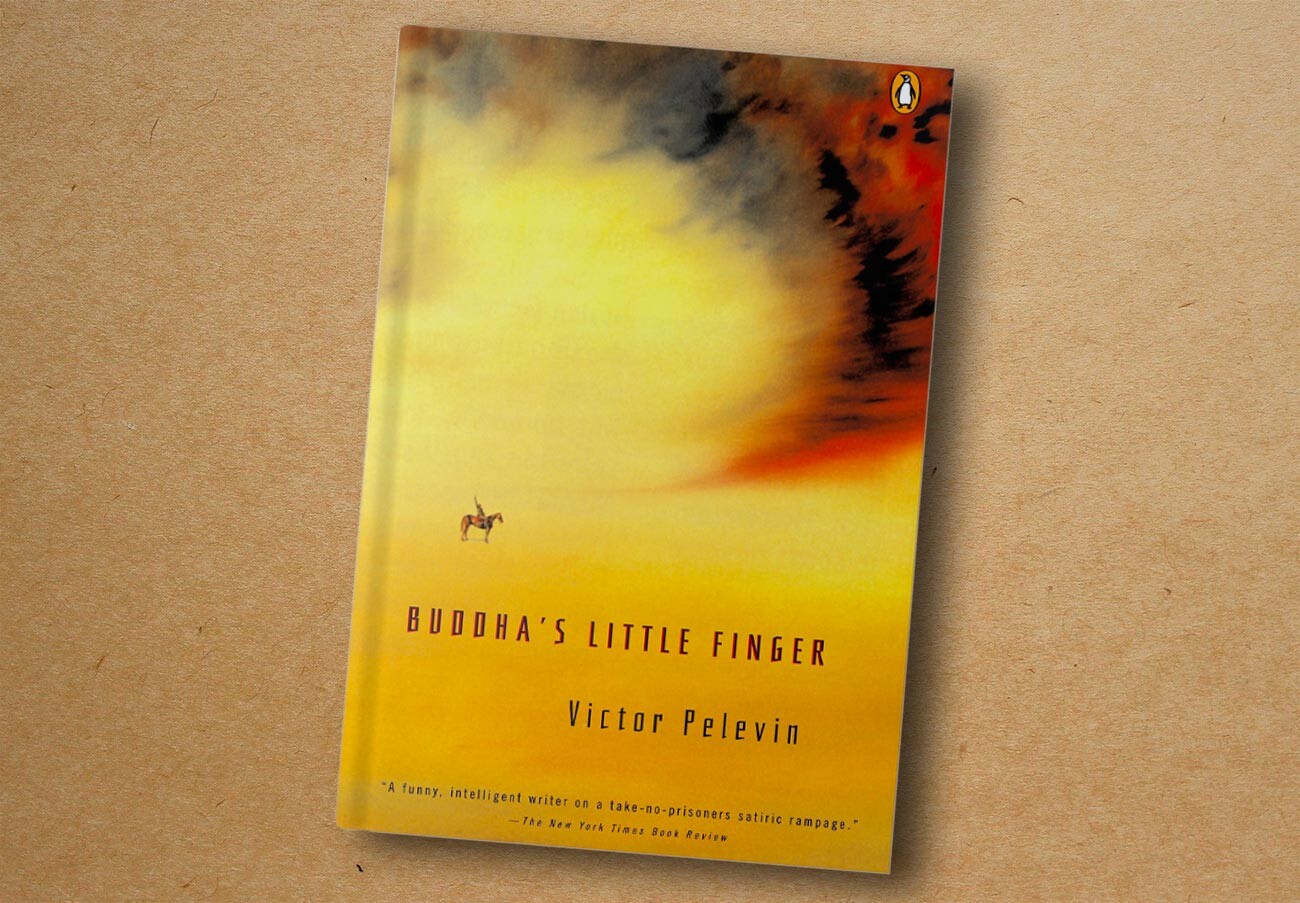
The poet Pyotr Pustota (whose surname means “emptiness”) finds himself in two temporally dislocated times: on the frontline of the Russian Civil War in 1918-19, and in a psychiatric hospital in 1990s Russia. The novel explores Pustota’s perception of space and time. Which of these worlds is real, and which is the fantasy of a diseased mind? Or maybe both are unreal?
READ MORE: Victor Pelevin, Russia’s most mysterious modern writer
On its release, critics described the book as the first "Zen Buddhist" novel in Russia, while Pelevin himself called it "the first novel in world literature where the action takes place in complete emptiness." It is one of the first novels by this most enigmatic Russian writer (Pelevin has not appeared in public for 20 years, although he releases a book each year, which his fans eagerly await as a new revelation and prophecy).
Russia in the late 19th–early 20th century. The young Erast Fandorin joins the imperial police force, where he displays extraordinary mental, deductive and athletic faculties: part Sherlock Holmes, part James Bond. Over the course of the cycle of novels, adversity and personal misfortune turn him from an ardent young idealist into a cold cynical aristocrat (one that cannot resist female charms). Real historical events form the backdrop of Fandorin’s escapades, which take him from Moscow to St. Petersburg, to Bulgaria and the Russo-Turkish War, then to Japan, and back again. There in the Land of the Rising Sun he saves the life of a yakuza youth, who becomes his faithful valet and sidekick. Together they pursue the criminal underworld, and even save the honor of the Russian royal family!
Boris Akunin is the pseudonym of Grigory Chkhartishvili, who has written several works under his real name, most notably a multi-volume history of Russia. But he remains better-known as Boris Akunin. His novels – stylish, subtle, suave – have gripped readers worldwide, and several have been turned into movies. The author claims that his hero’s adventures are over. However, the last book was teasingly titled This Is Not Farewell, leaving many fans dangling on tenterhooks.
Eighteenth-century Russia is recovering from the Pugachev uprising (a series of popular rebellions that took place in the Russian Empire after Catherine II came to power in 1762). In the Urals, the young Ostasha sails down a river on a large barge laden with iron from local factories. His father has died mysteriously, and he intends to find out the reason and even raise a rebellion against the local authorities. On top of that, he is searching for the hidden treasure of Pugachev… “The real ‘gold of the rebellion’ is not Pugachev's treasure, but the answer to the question: how to do the impossible without losing your soul?” says the author.
The work of the Ural writer Alexey Ivanov is very diverse, and critics sometimes struggle to pinpoint the genre of his novels. He transports the reader to all sorts of places: to Ancient Rus, to the time of the Teutonic Knights, to 1990s Russia. Pagans, ancient tribes, royal nobles and robbers are described as masterfully as gangsters from the recent past and even Soviet vampires… Everyone will find something to their liking among Ivanov's novels.

Post-apocalyptic Moscow after a nuclear war. People live in the subway stations and underpasses, because it is too dangerous to go to the surface. The subway has been divided into spheres of influence, states within a state: communists inhabit one subway line, anarchy reigns on another. The protagonist Artyom lives in a station that gets attacked by mutants. He undertakes an expedition to figure out what's going on, when even stranger things start to occur…
The novel, which became a cult classic, spawned a whole universe of fan fiction and video games. The young writer Glukhovsky became an idol of his generation and wrote two sequels, which also became bestsellers.
A Polish-Jewish interpreter conceals his origins and helps Jews escape from the ghetto. Himself hiding from the Nazis in a monastery, he is baptized into Catholicism. Later he moves to Haifa, Israel, where he serves as a priest in a Catholic church. He comes across as saint-like, earning and spending his own money on maintaining the church and giving shelter to all who need it. He thinks beyond faith and nationality, and tries to build bridges between religions. The hero is based on the real-life Oswald Rufeisen, whom the author met personally.
The novel, which consists of letters, diary entries and newspaper cuttings, is hard-hitting, full of direct speech. In addition, it is an important discourse on religion and theology, stressing the precedence of human life over the strictness of dogma.
This book about samizdat (self-published literature) and life in the USSR in the 1960s and 70s features a wide scattering of characters and destinies: some are forced to snitch on their friends; others are fired from work and become unemployable; still others are forced to disown their own parents because they do not conform to the ideals of the Communist Party.
READ MORE: Why Russian writer Ludmila Ulitskaya should win the Nobel Prize
Ulitskaya displays an impressive cross-section of society at a time when, after a brief thaw, the USSR was again descending into the abyss of totalitarianism, and any life could be broken at the snap of the KGB’s fingers.
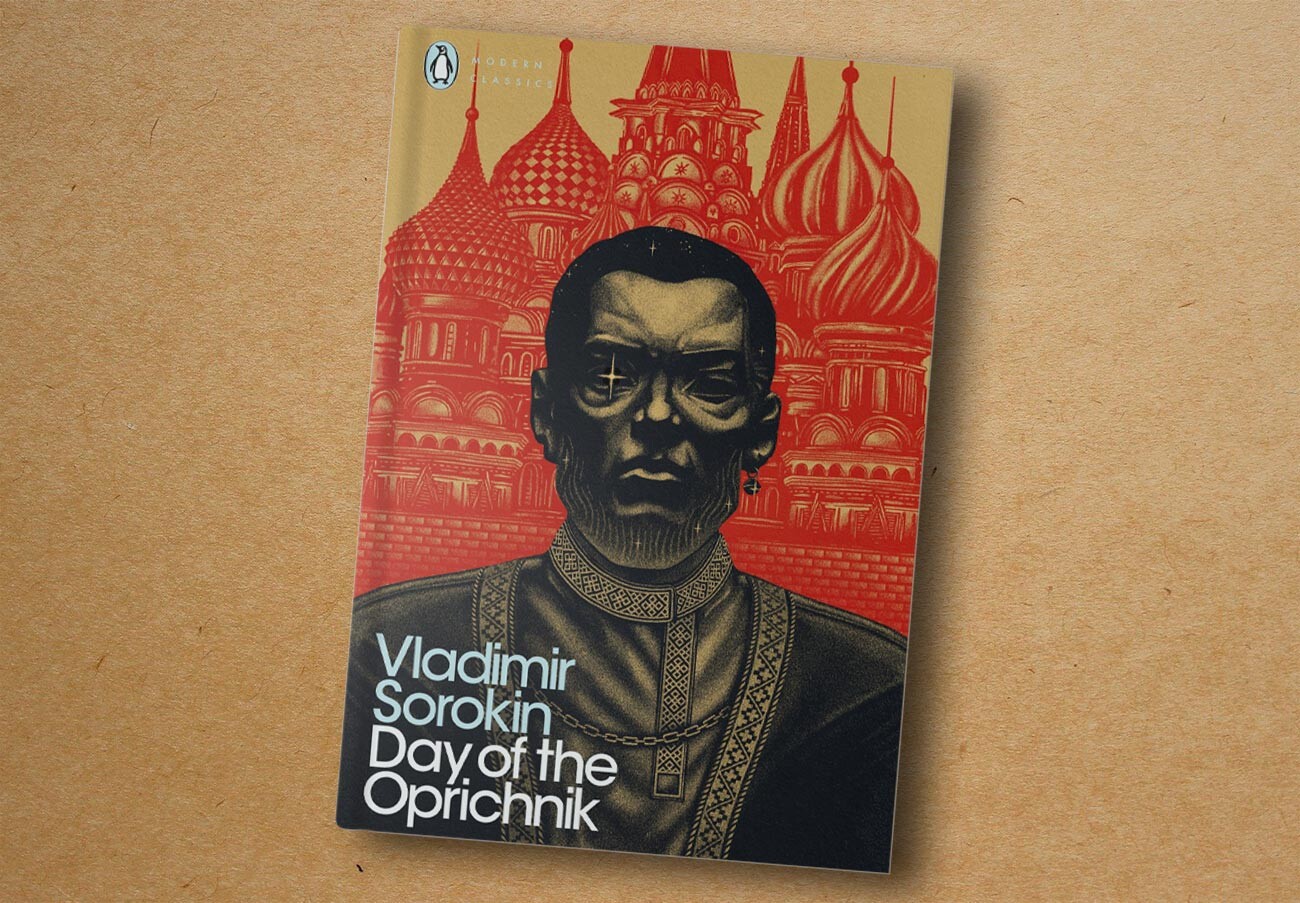
The year is 2028. The monarchy has been restored in Russia, and the country is separated from the world by the Wall. The tsar’s personal army of oprichniks, a privileged class, commits atrocities and purges. They instill fear in the “boyars” (nobles) and ordinary folk, drive expensive cars and go unpunished.
In the historical context, oprichniks were Ivan the Terrible’s secret police and personal bodyguards. Devoted and merciless, they carried out the despotic ruler’s orders unquestioningly. The target of this vicious political satire is believed to be the all-powerful siloviki (securocrats) of present-day Russia. However, the author rejects such a one-sided interpretation. The unexpected ending adds a phantasmagoric element to the story.
Vladimir Sorokin is the king of Russian underworld prose. In the worlds he creates, everyday reality is intertwined with the occult and technological wonders of the future. In the novel "Doctor Garin," Sorokin presents the full universe of his work in perhaps its most complete form. The title of the book is a direct reference to "Doctor Zhivago" (see above), and "Doctor Garin" does indeed have much in common with Pasternak’s masterpiece, and not only. Journeying with the cyborg doctor through the Russia of the distant future, divided into principalities as in medieval times, the reader travels through different styles, eras and genres of Russian literature, in which Sorokin is a consummate master.
READ MORE: 3 outrageous things predicted by Vladimir Sorokin
The plot centers on two characters: the historian Shubin and the former geologist Zhokhov. We meet them in 2004, but they recall their experiences of the early 1990s, when Russia lay in ruins. Zhokhov is trying to make ends meet any way he can, and gets into various scrapes. Shubin writes articles about impostors in world history, whose behavior mirrors that of Zhokhov. They too seek to benefit from any situation in any conditions, without engaging in unnecessary reflection.
Yuzefovich, a historian himself, skillfully handles the historical material, for which he received the Big Book prize, Russia’s top literary award. The novel’s title is a reference to an ancient parable from Greek and other mythology about a struggle between cranes and pygmies. Basing his tale on it, the author calls to mind that history is a struggle between cranes and dwarfs, “who fight among themselves through the medium of Cossacks and Poles, Venetians and Turks, Lutherans and Catholics, Jews and Christians.” After the battle, people themselves cannot explain why and for what they were fighting.
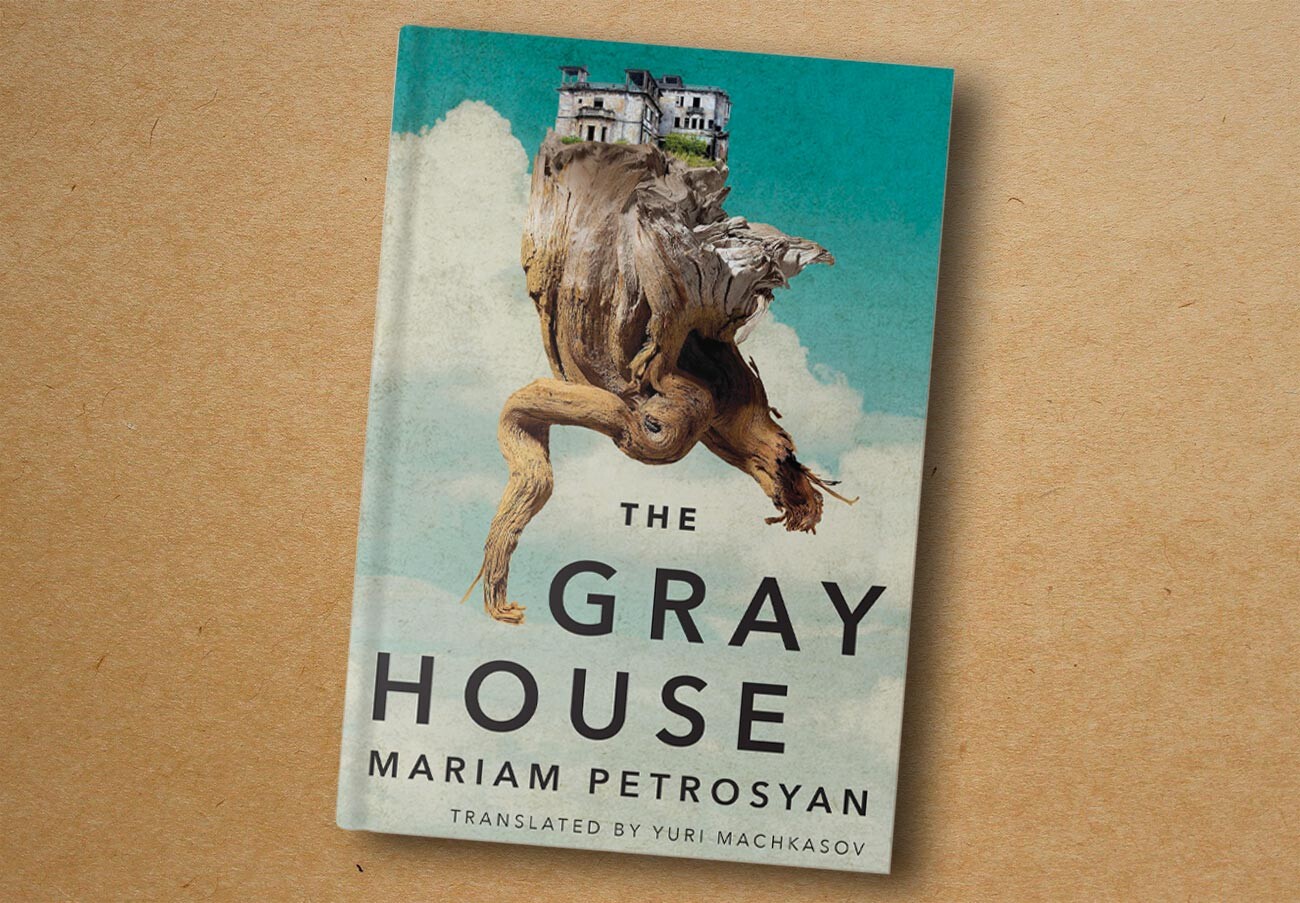
Here we have the “Soviet Hogwarts” – a boarding school for children with disabilities. Founded 100 years ago, it is full of secrets and mysteries. A newcomer at the school, wandering through the halls and corridors, discovers dark, blood-soaked pages from its history. The house, it turns out, has a magical underside, a parallel world.
Despite its length, this 700-page postmodern novel is read in one breath and became a bestseller far beyond Russia’s borders. British newspaper The Guardian likened the book’s atmosphere to the work of J.K. Rowling, Salman Rushdie and Donna Tartt.
An epistolary novel in the form of two lovers’ correspondence. Here, however, time and space do not coincide: he writes from a distant war, the Battle of Peking in 1900 during the Boxer Rebellion, while she answers him over the span of the 20th century. And he is probably no longer alive. The author hints that, as far as love is concerned, years and distance are no barrier.
The novel is effectively a ready-made scripted drama, and has been staged by several theaters already. Shishkin, who lives in Switzerland, is well-known in the West, including for his previous book "Maidenhair". "The Light and the Dark" has been translated into multiple languages.
Medieval Russia. The young Arseny’s beloved dies during a difficult childbirth. He believes that the fault lies with him, because they were not married, so he decides to devote his life to saying prayers for the salvation of her soul. Arseny takes a new name (first Ustinius, then Laurus), makes a pilgrimage to Jerusalem, and eventually becomes a hermit monk in the forest, receiving and healing the sick.
Vodolazkin was the first modern writer to embrace the theme of holy fools, who were important figures in medieval Russian history. These “people of God” got away with acting strange and even insolence to the tsar. On the book’s release, Vodolazkin, a philologist and Russian medievalist by training, a disciple of Dmitry Likhachev, was hailed as the “Russian Umberto Eco.” But despite the latter’s obvious influence, Laurus is wholly original, replete with skilfully stylized Old Russian speech and profound reflections on moral values.

Lazar Lindt, a Jewish math genius, is untouched by the Russian Revolution, the Russian Civil War, the Stalinist purges and even the Second World War. The author tells the hero’s story through the prism of those he loved. First it was Marusya, the wife of his boss, who was 20 years his senior and looked on Lazar as her child. Then it was his wife Galina, 40 years his junior, but in whom Lindt clearly traces the features of Marusya. Later we see how quaintly his genius is reflected in the character of his granddaughter, the ballerina Lidochka, whom he does not live to see.
This compelling family saga, which spans the entire 20th century, masterfully shows how ordinary lives were impacted by the political upheaval in the country, how people adapted to the new living conditions. Stepnova is considered the successor to the tradition of the great Russian novel.
The setting is the Solovki prison camp at the dawn of the Soviet Gulag in the 1920s. There is no Great Terror just yet; the camp is full of real dangerous criminals. The protagonist Artyom does all he can to improve his position in the camp, up to and including an affair with a female guard… And, of course, he reflects on the consequences of “trading his conscience.”
READ MORE: 5 reasons to read Zakhar Prilepin’s ‘The Monastery’
This is no run-of-the-mill novel about the horrors of the Gulag, but the in-depth story of the ordeal of one of the millions who ended up in the camps. Prior to this monumental work, Prilepin was known as the author of biographical stories and novellas about serving in Russia’s riot police and the war in Chechnya, about nightclub bouncers, about the everyday problems of young guys from provincial cities. For The Abode, the writer carefully studied documentary sources to paint vivid pictures of the morally ambiguous camp warden and the inmates, who lead a paradoxical existence in their monastery prison cells with dreams of freedom.

Zuleikha, a Muslim woman from a Tatar village, lives under the yoke of her authoritarian husband and mother-in-law. Soviet rule recalibrates all their lives: the communists dispossess the family, kill her husband, take away their household and banish her to Siberia. In a bizarre twist, for the first time in her life, she gains self-confidence and a sense of identity.
The literary debut of Kazan writer Guzel Yakhina became a bestseller and a literary sensation. The book was based on the memoirs of her grandmother, who spent years in exile in Siberia, and those of other Tatars dispossessed in the 1920s.
It is winter, a hectic New Year’s Eve, outside lie frost and dirty snow. In the Petrov family, father, mother and son all come down with the flu and suffer hallucinations due to high fever and medicines with questionable expiry dates. As a result, they become like dark doppelgängers of themselves, going about their daily business, by inertia, like zombies.
Salnikov's debut novel delighted readers and critics alike. In it, the author not only immerses you in the phantasmagoric mind of the flu sufferer, but creates nostalgic ephemeral memories of Soviet childhood. One of Russia’s top directors, Kirill Serebrennikov, turned the book into a film, Petrov's Flu, released in 2021, which presents an even more hyperbolic version of events.
The novel consists of three parts, set in the 1930s USSR. The protagonists are students and Komsomol (Communist Youth) members, Jews and dreamy literati, living life as best they can. But over them all hangs a common threat: the inevitability of war with Nazi Germany.
Bykov paints an atmospheric picture of the Stalinist period that would be almost cozy were it not for the backdrop of purges and impending war. Strikingly, there are many parallels between that time and the present, which Bykov delicately traces, without drawing direct analogies. In the author’s multifaceted oeuvre, say critics, this is perhaps his best novel.
If using any of Russia Beyond's content, partly or in full, always provide an active hyperlink to the original material.
Subscribe
to our newsletter!
Get the week's best stories straight to your inbox